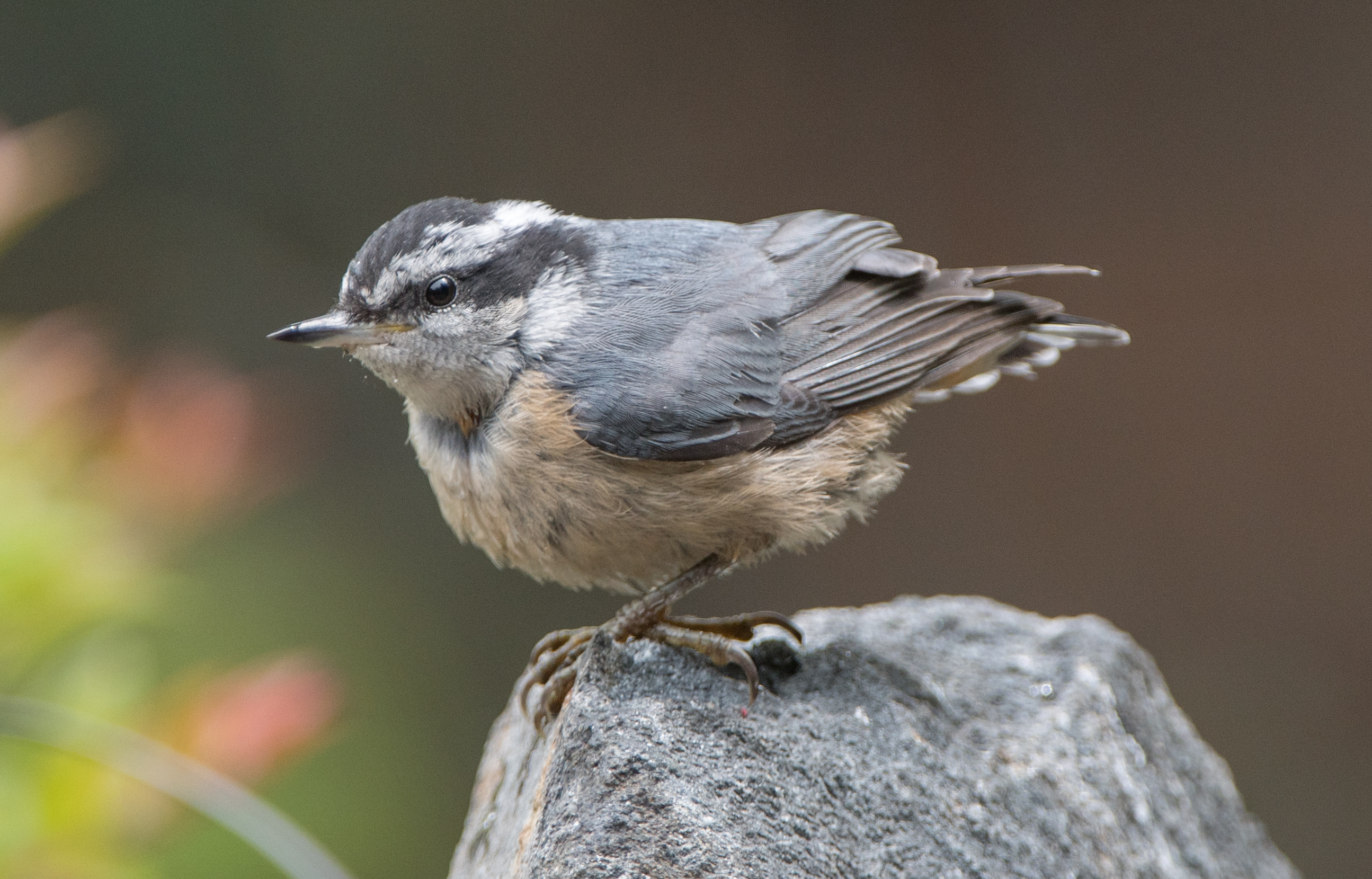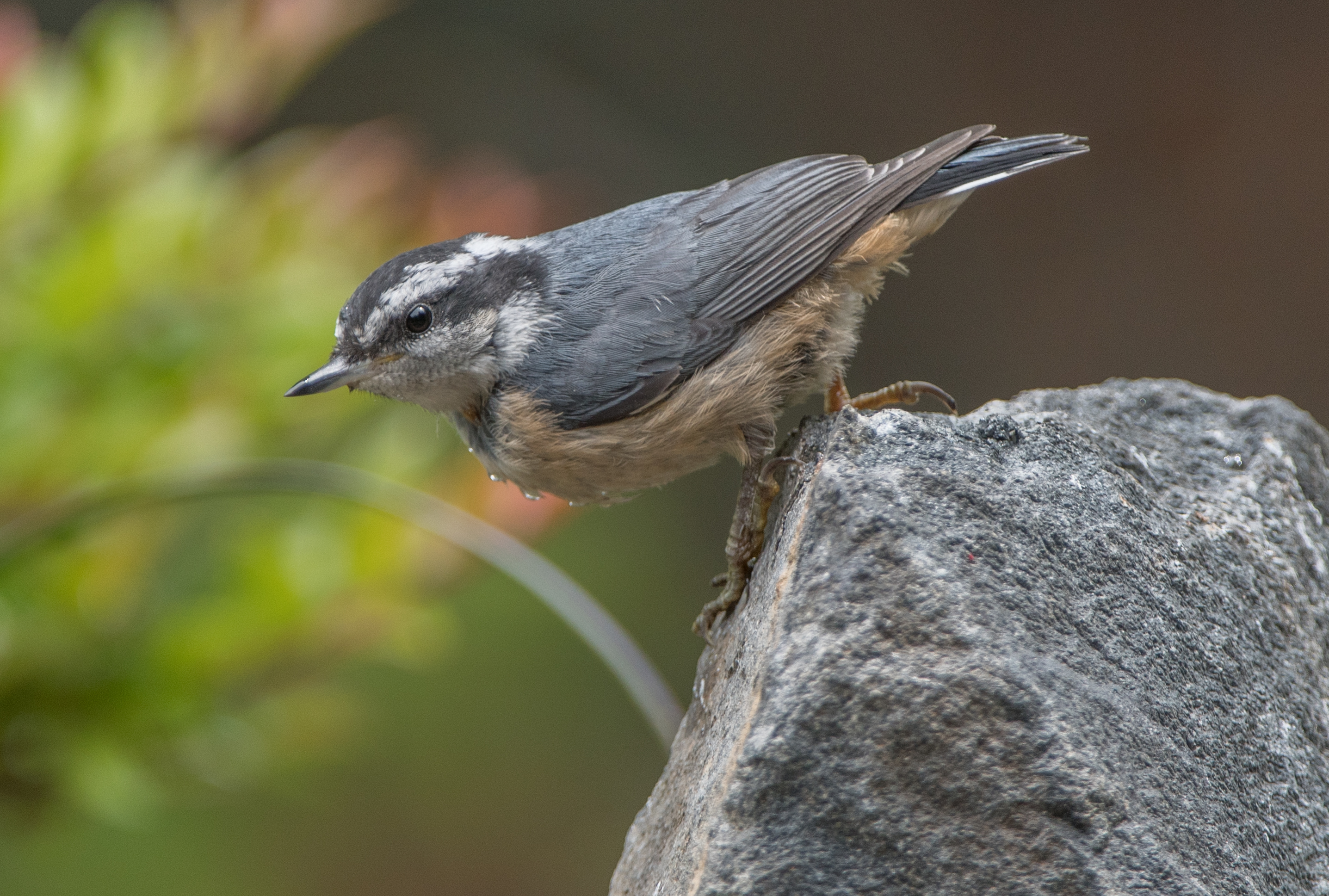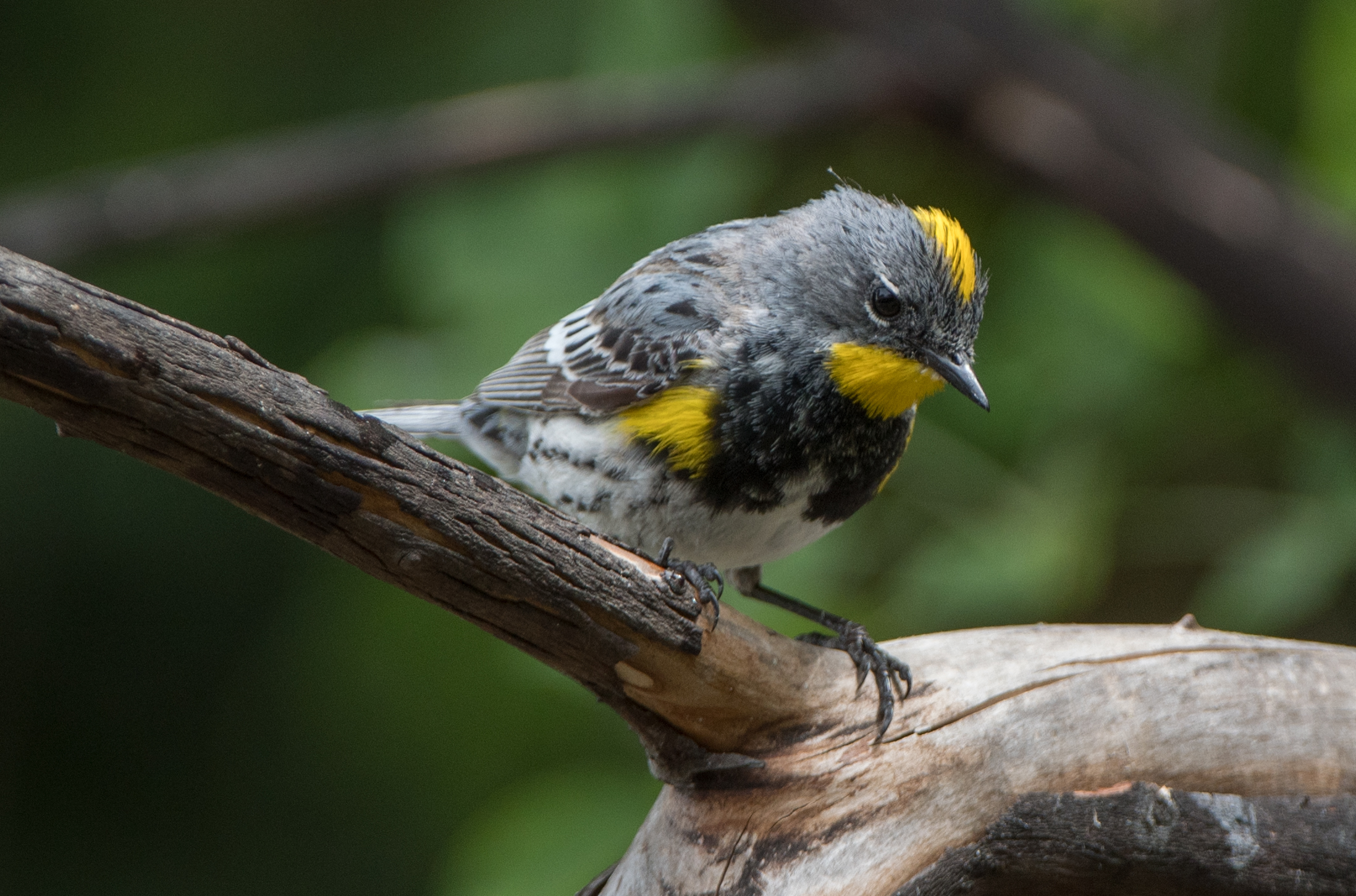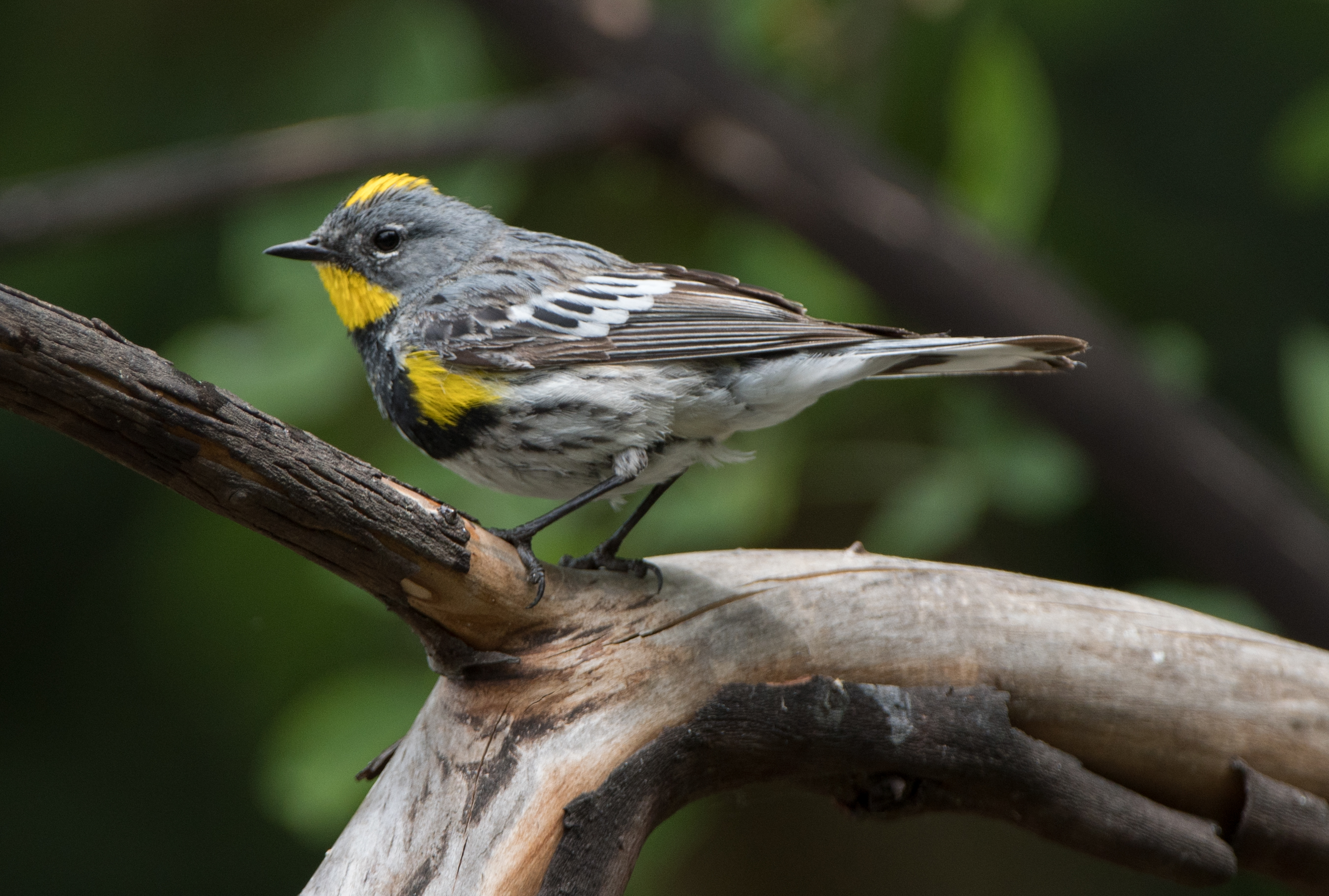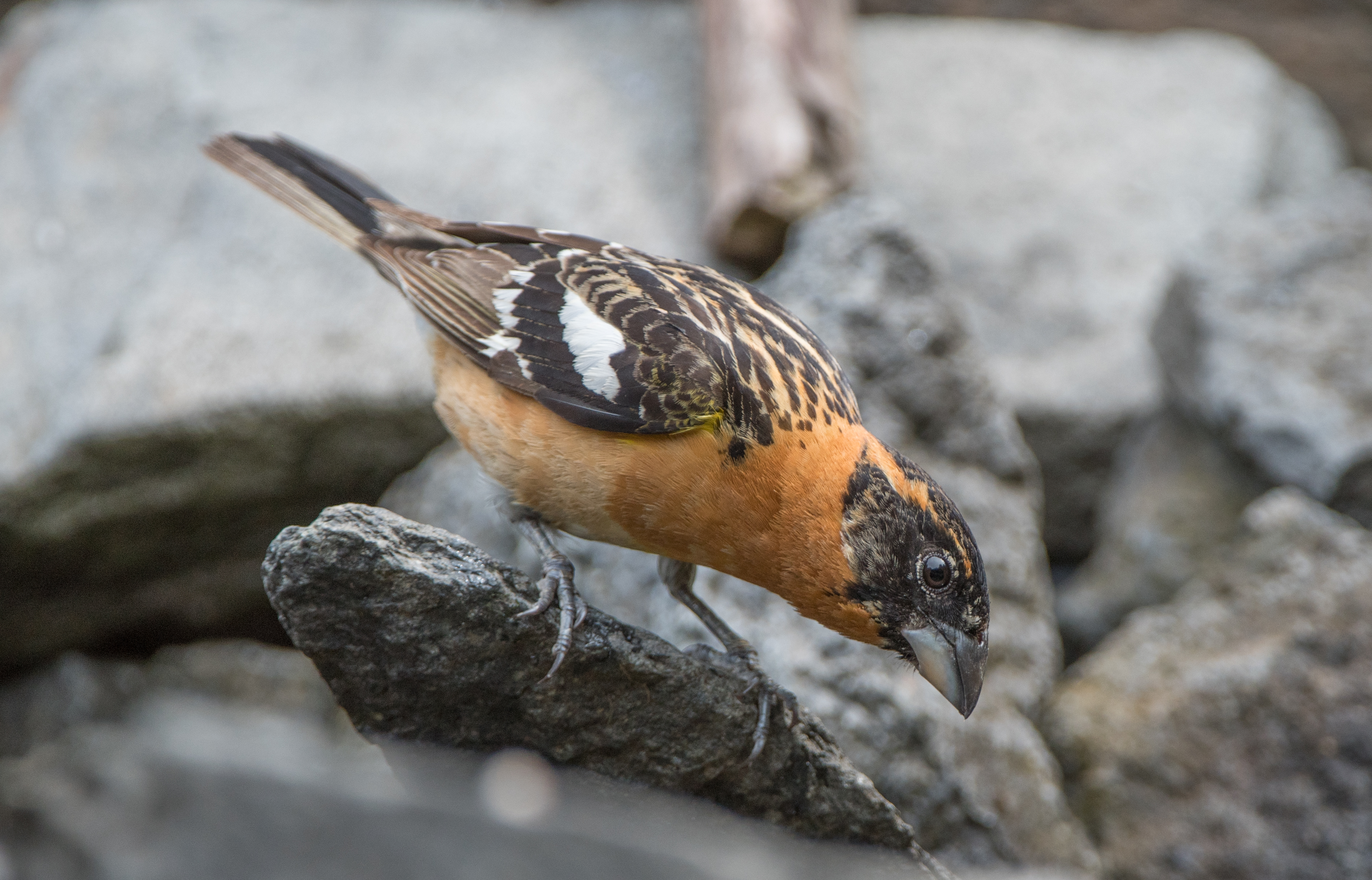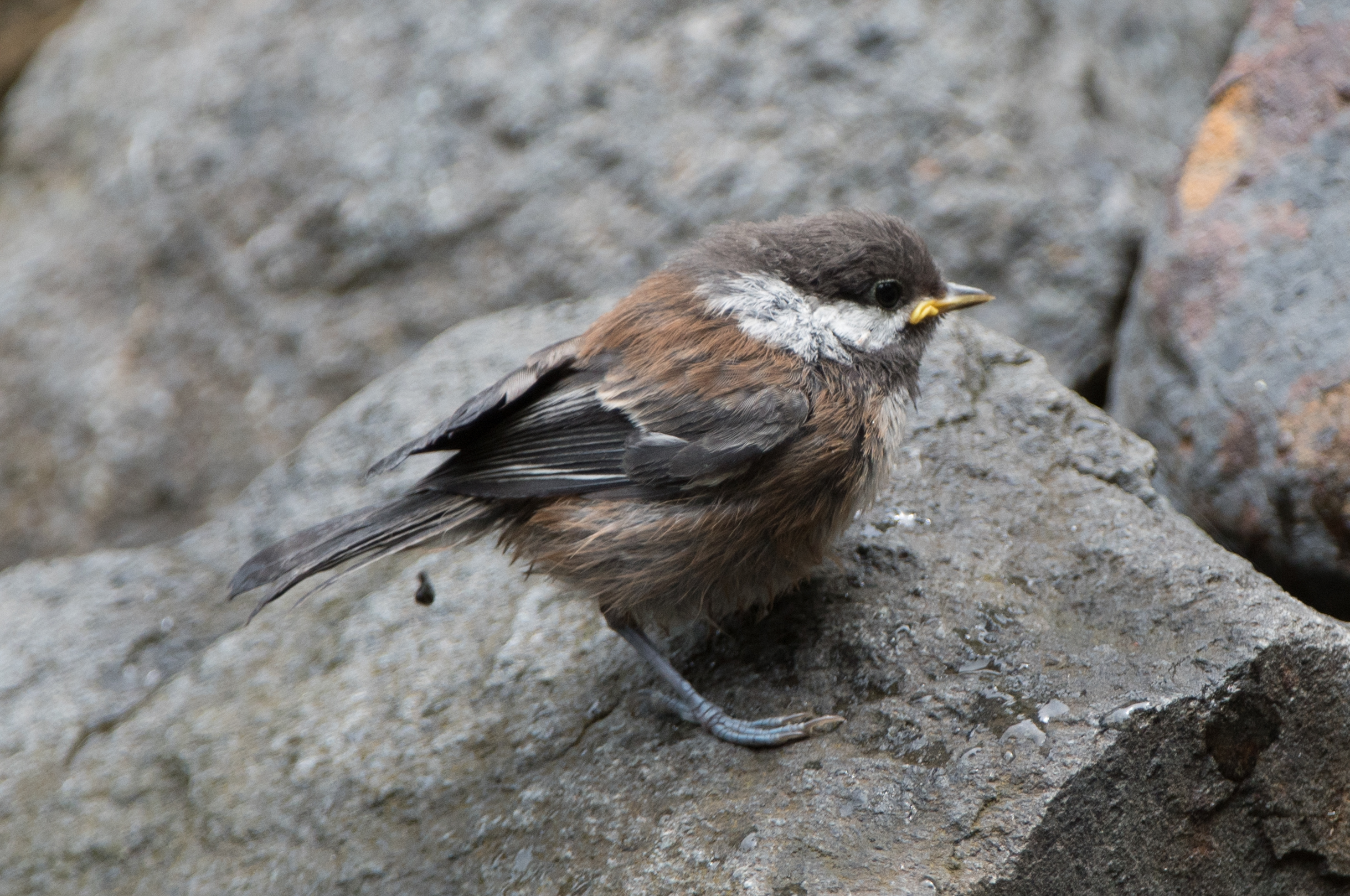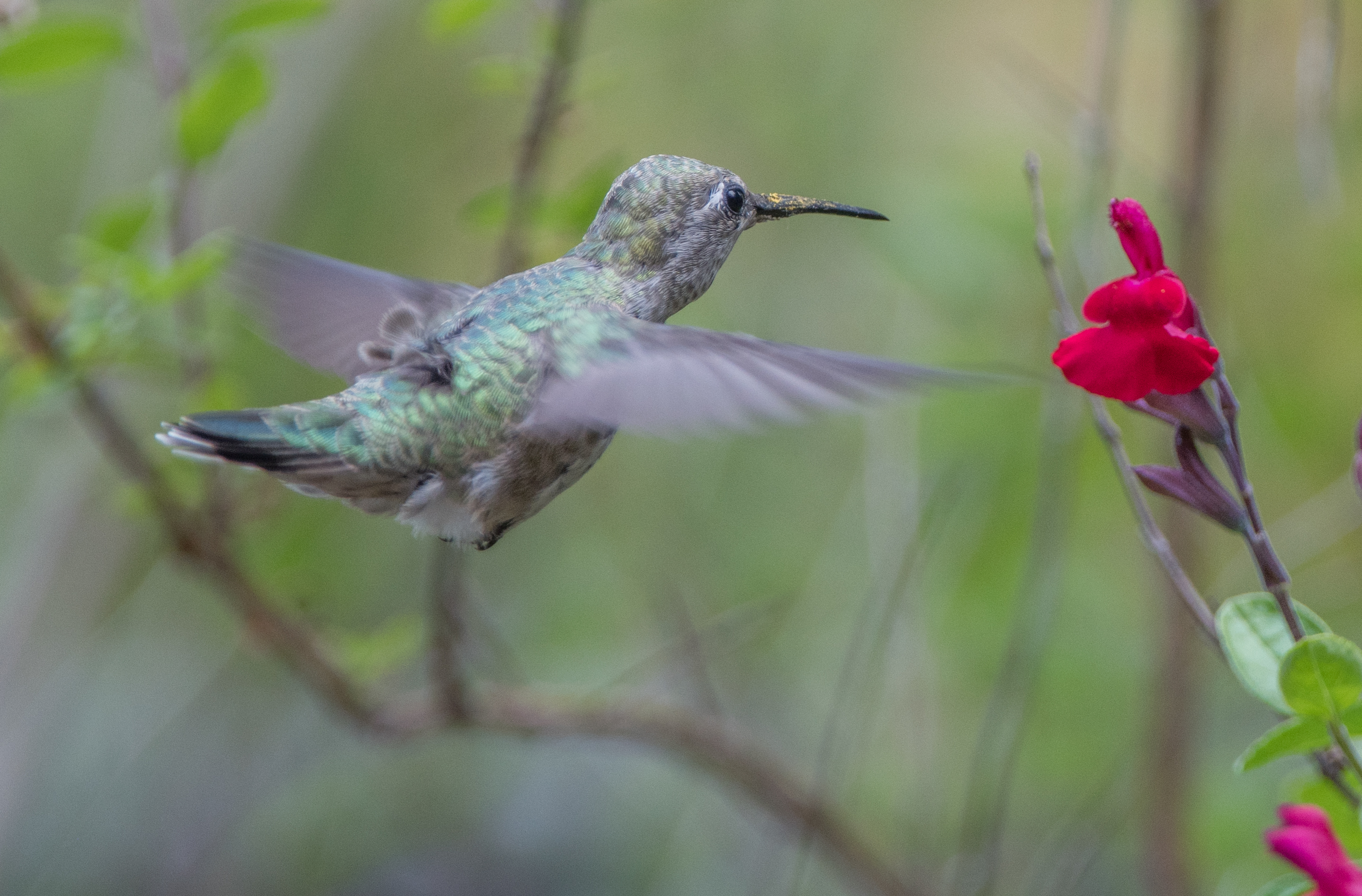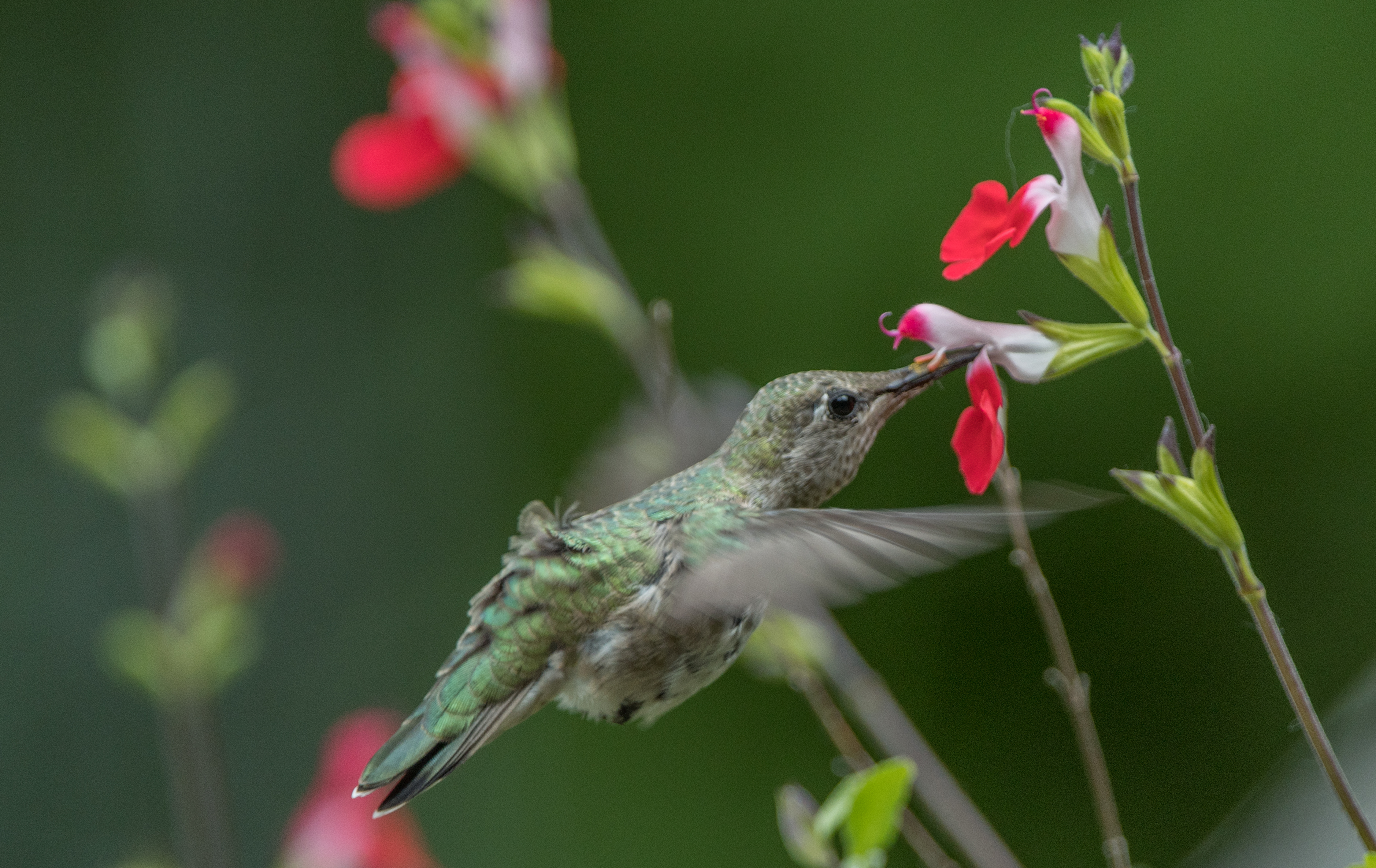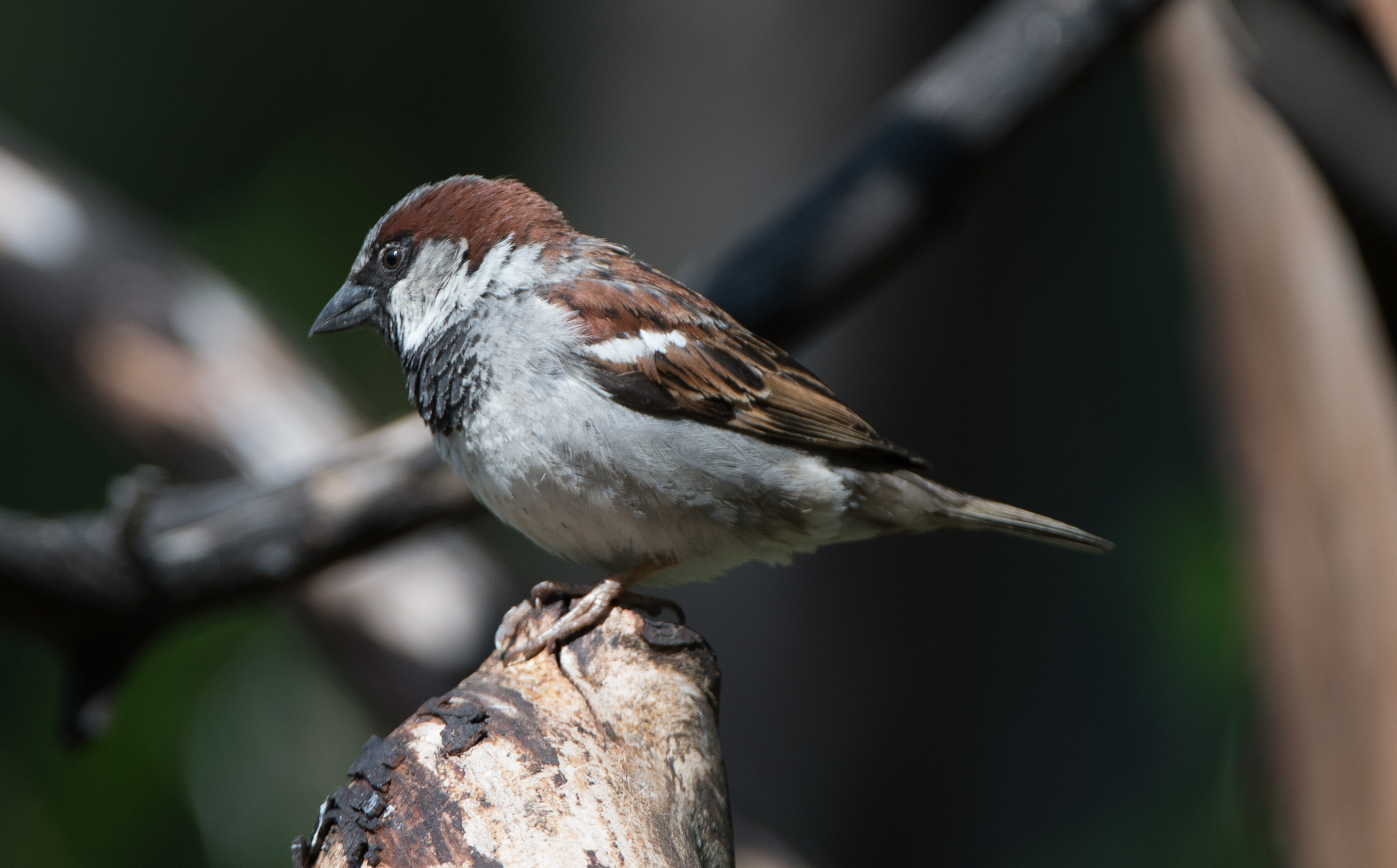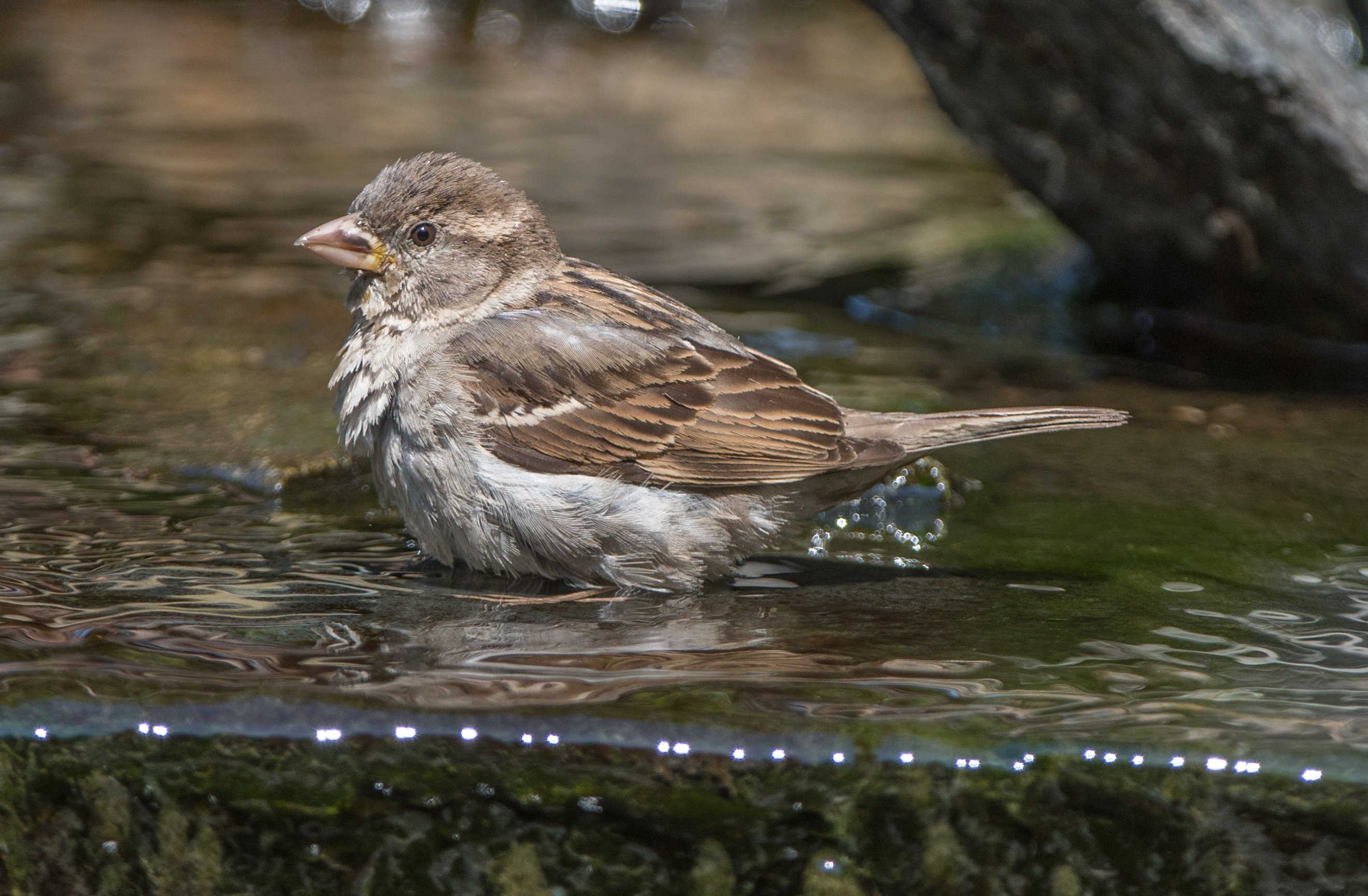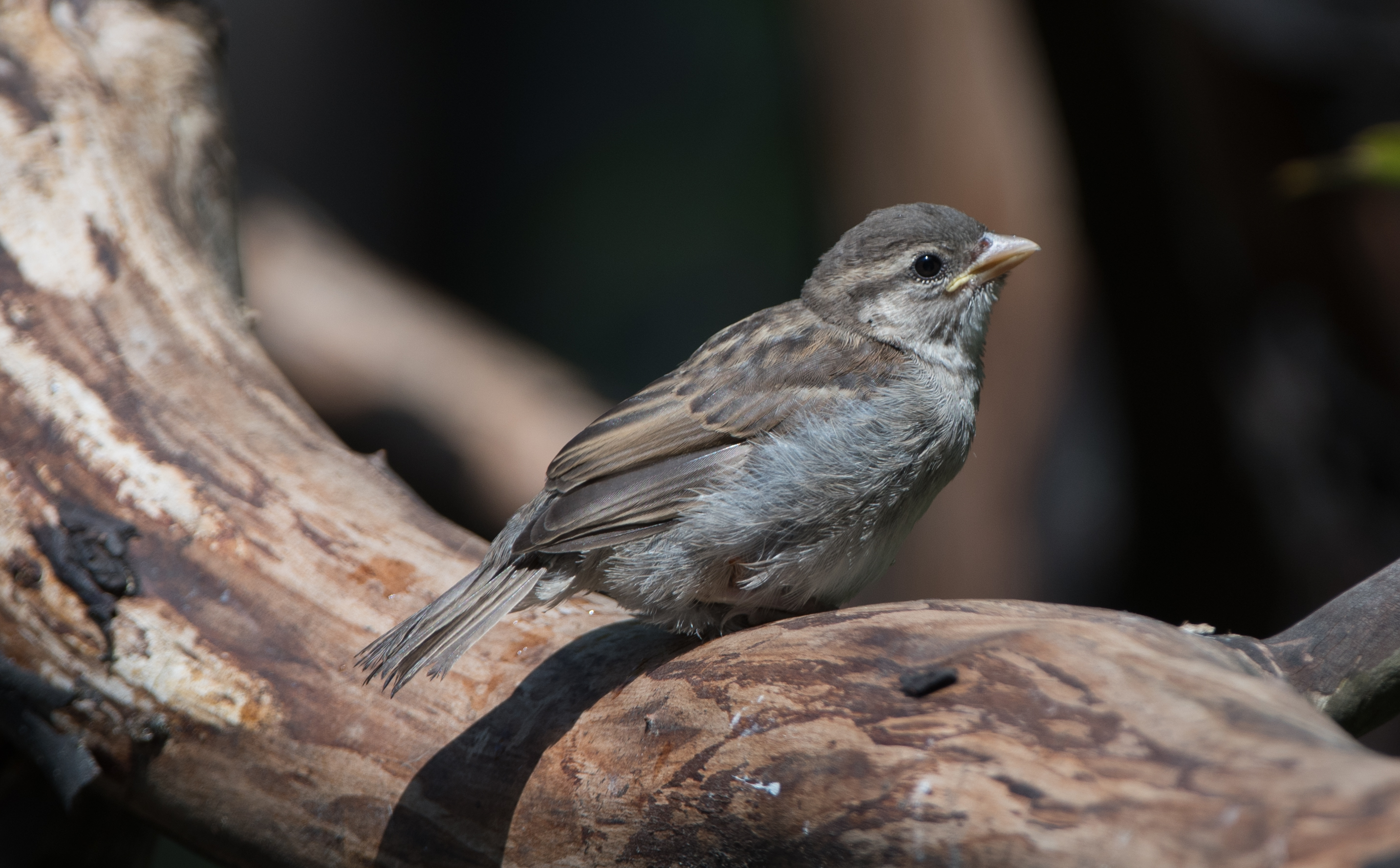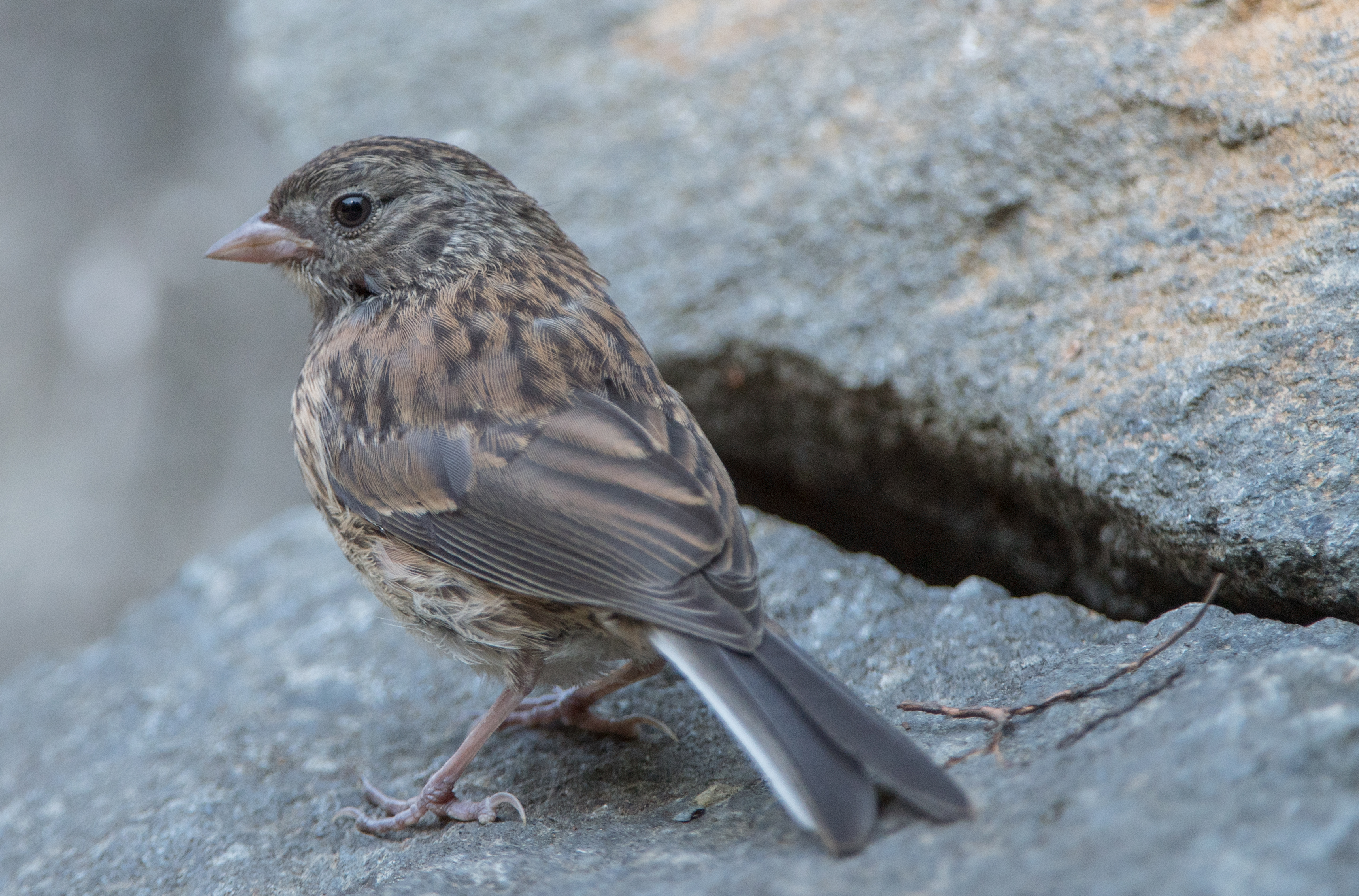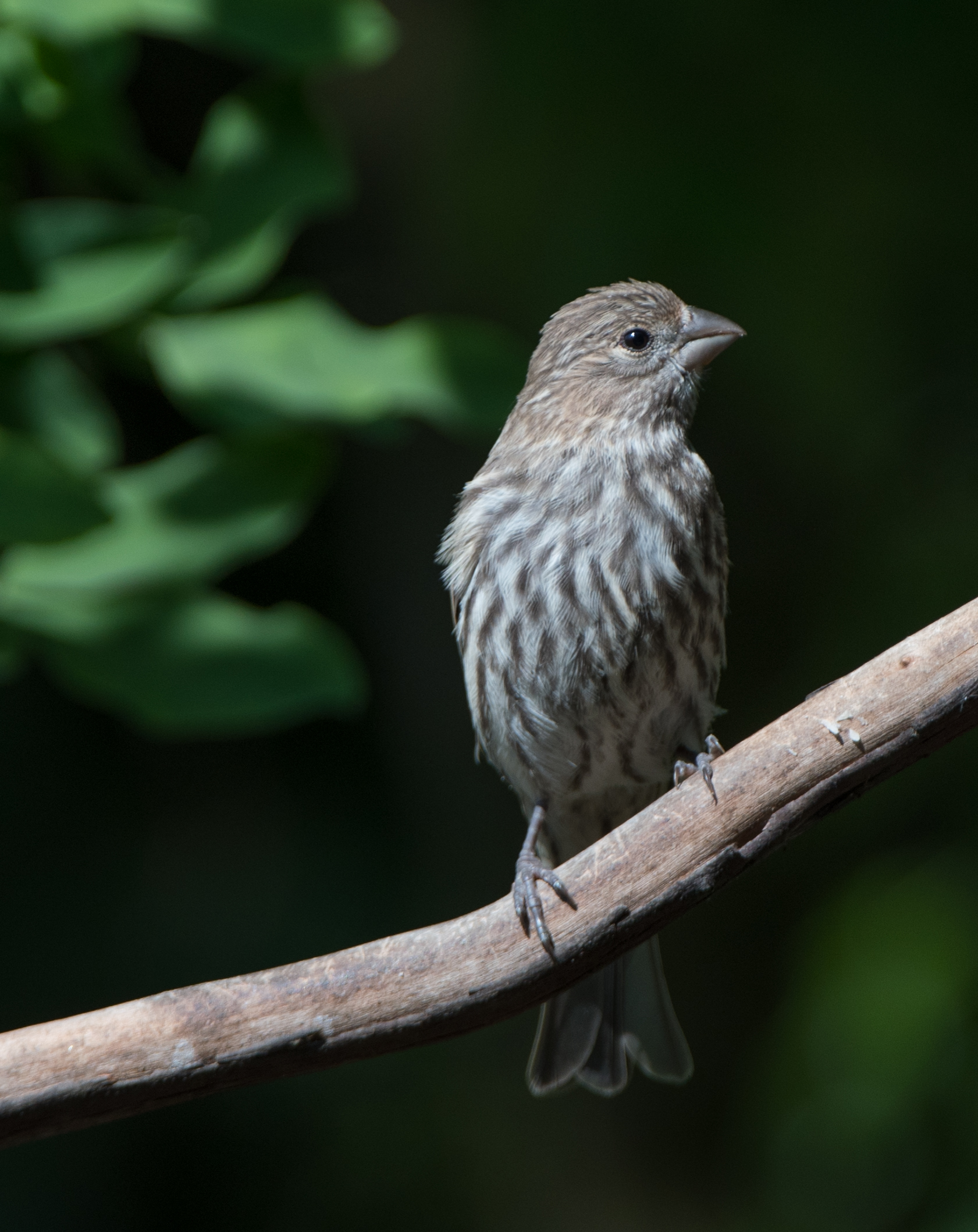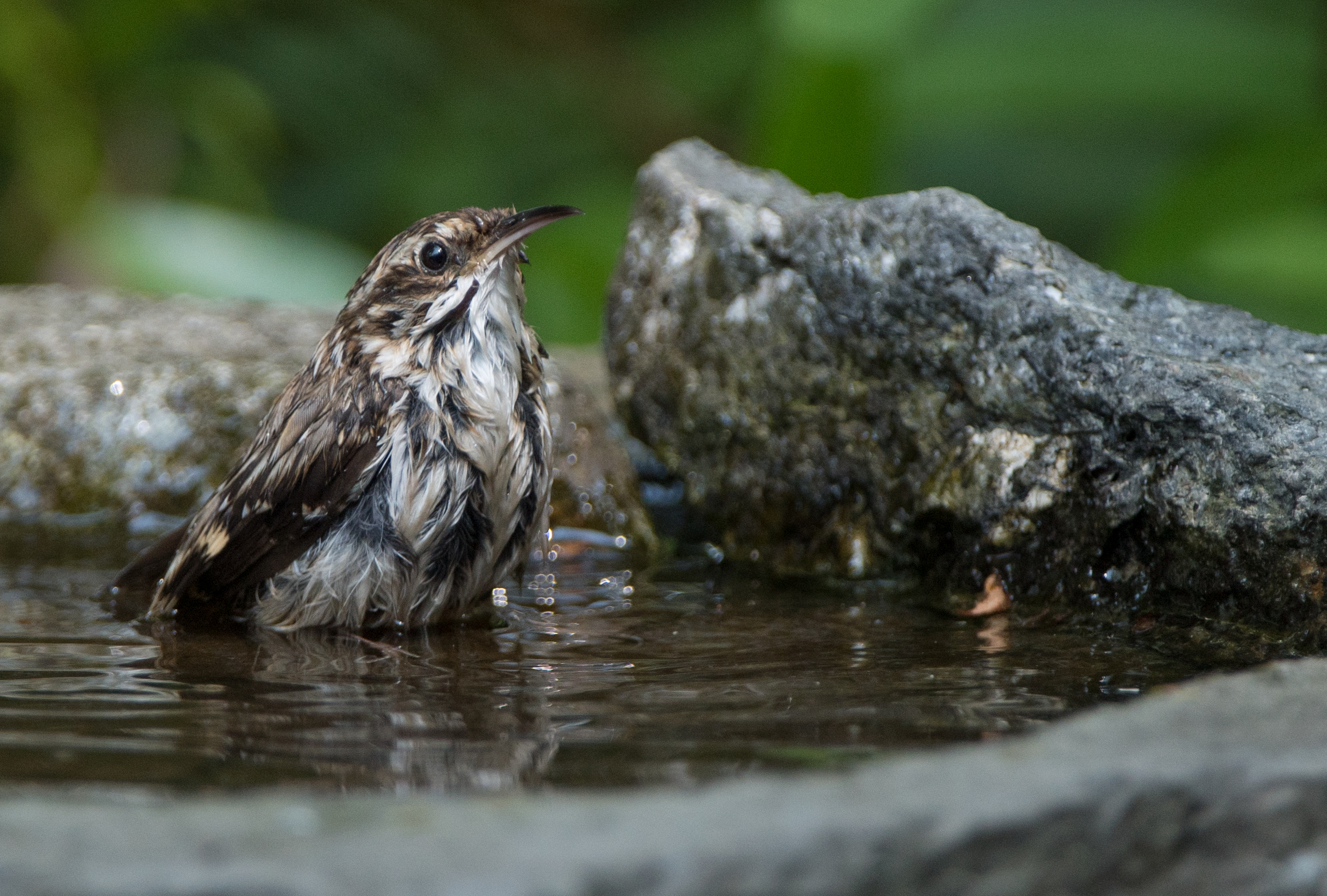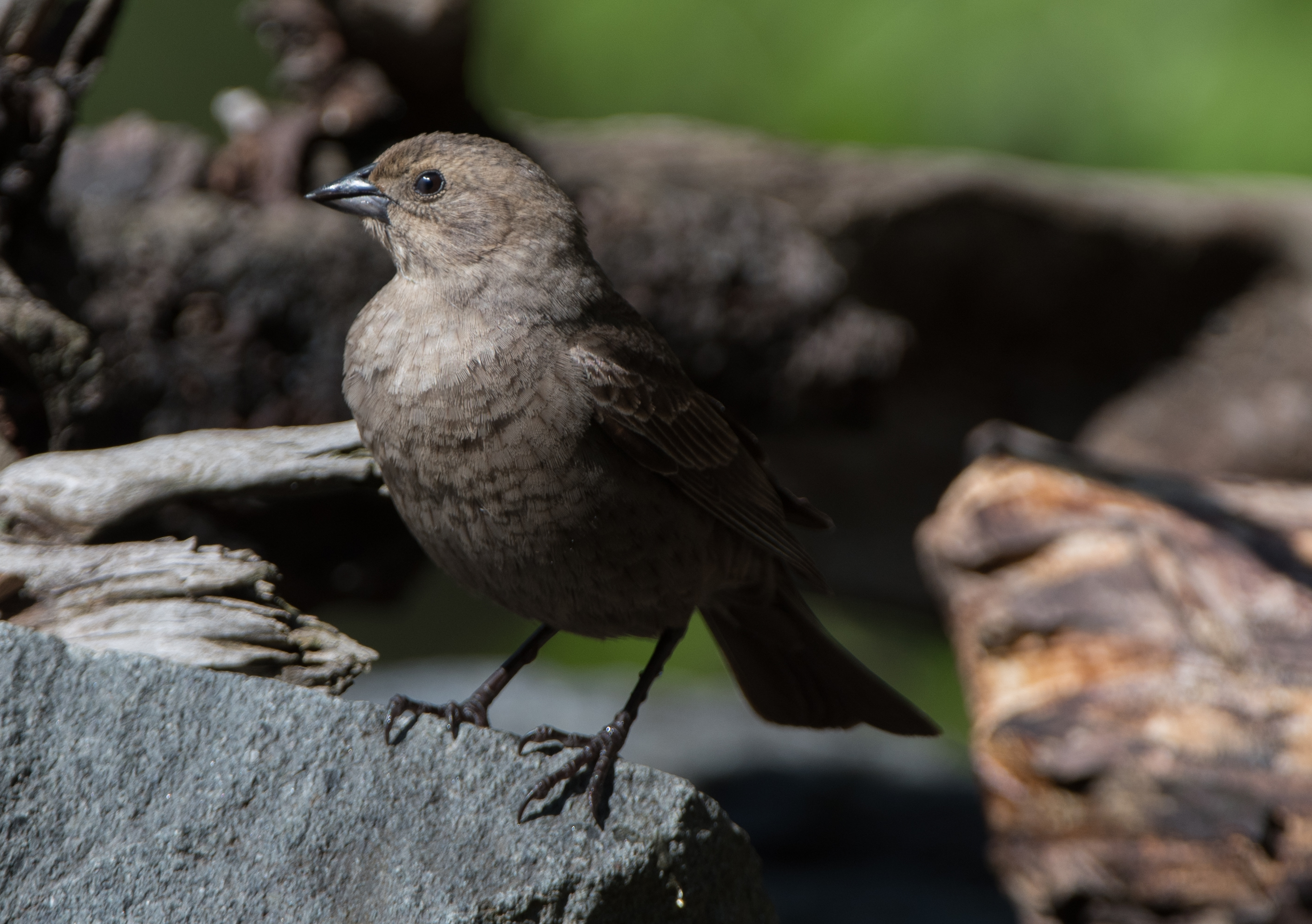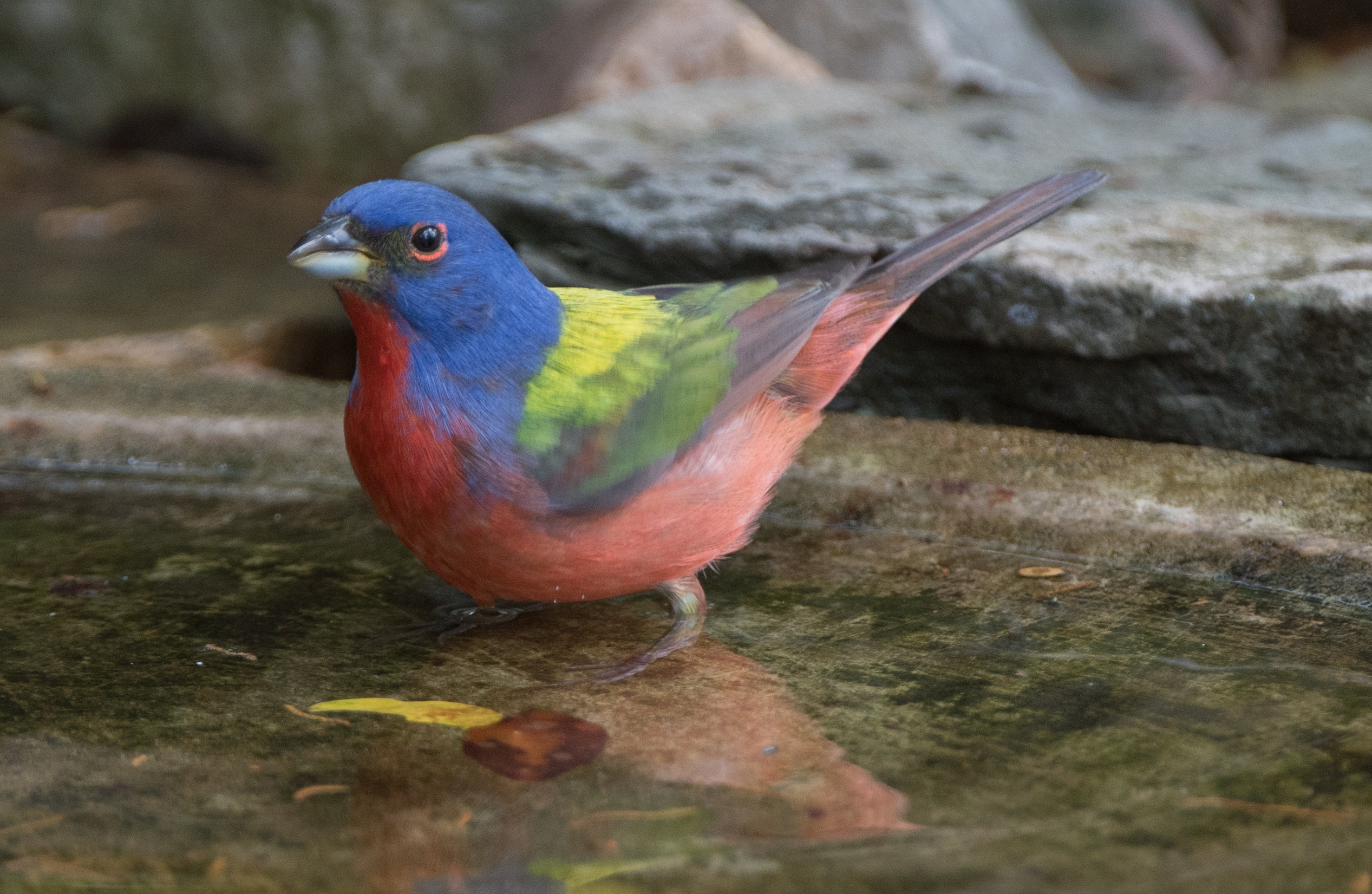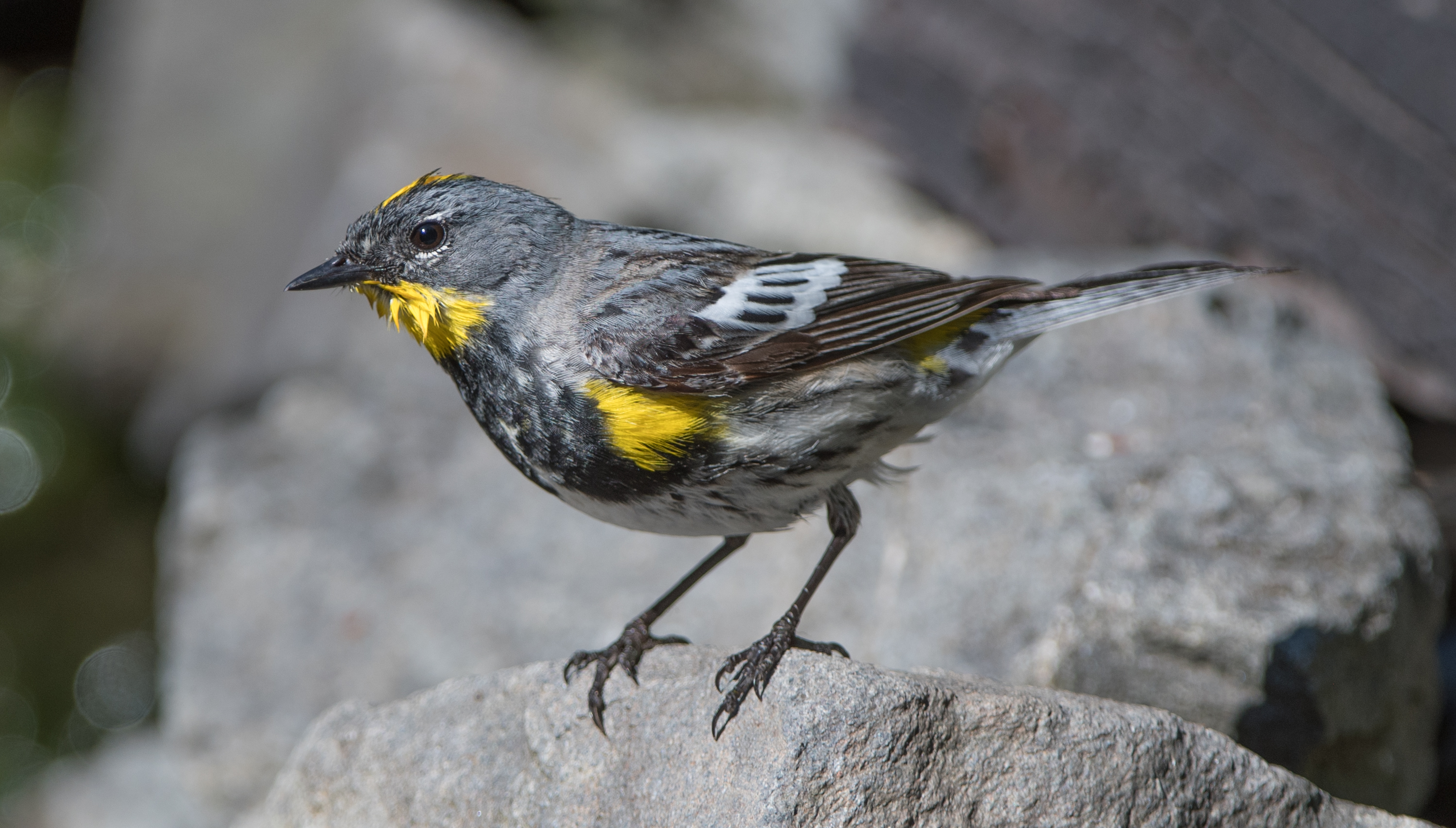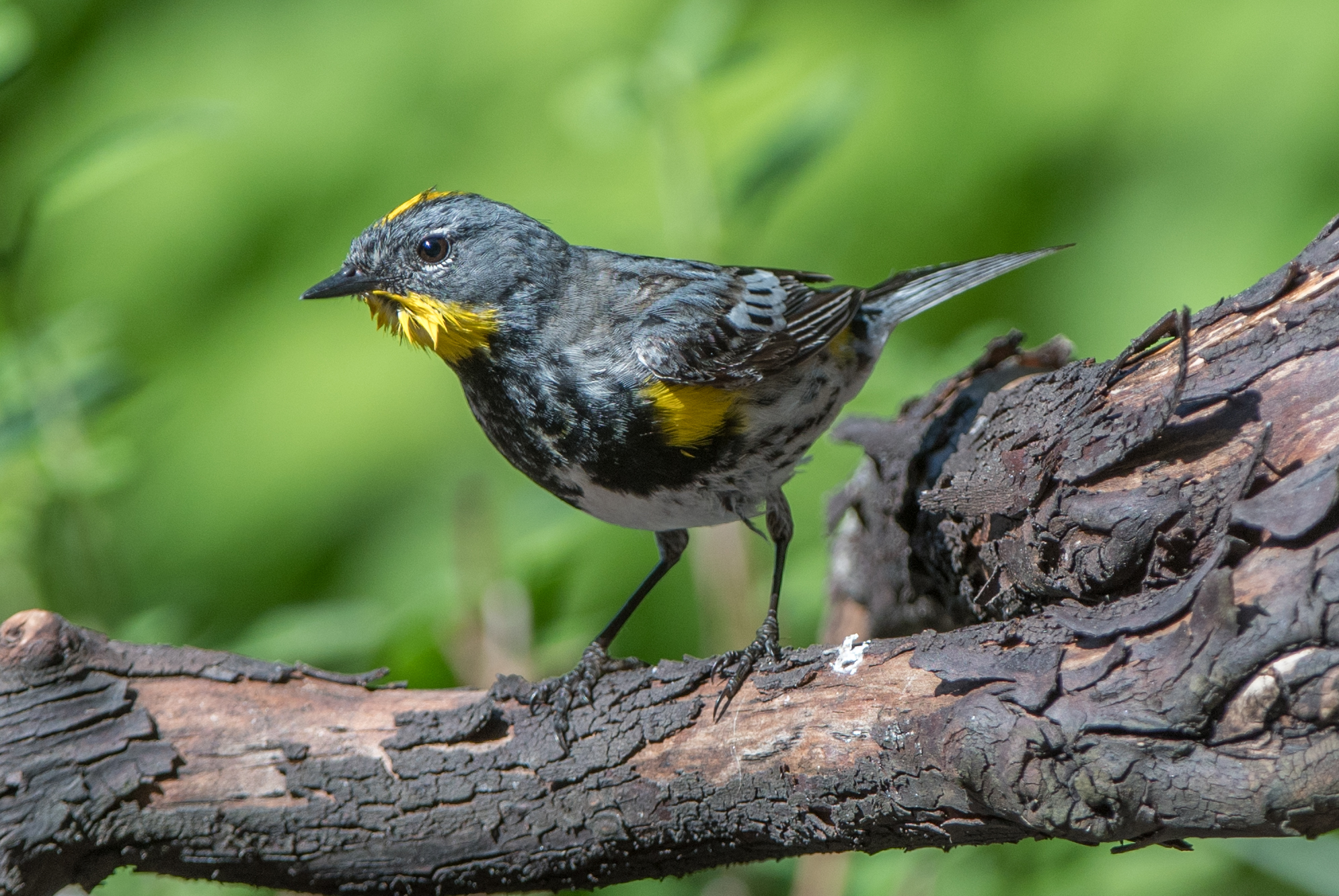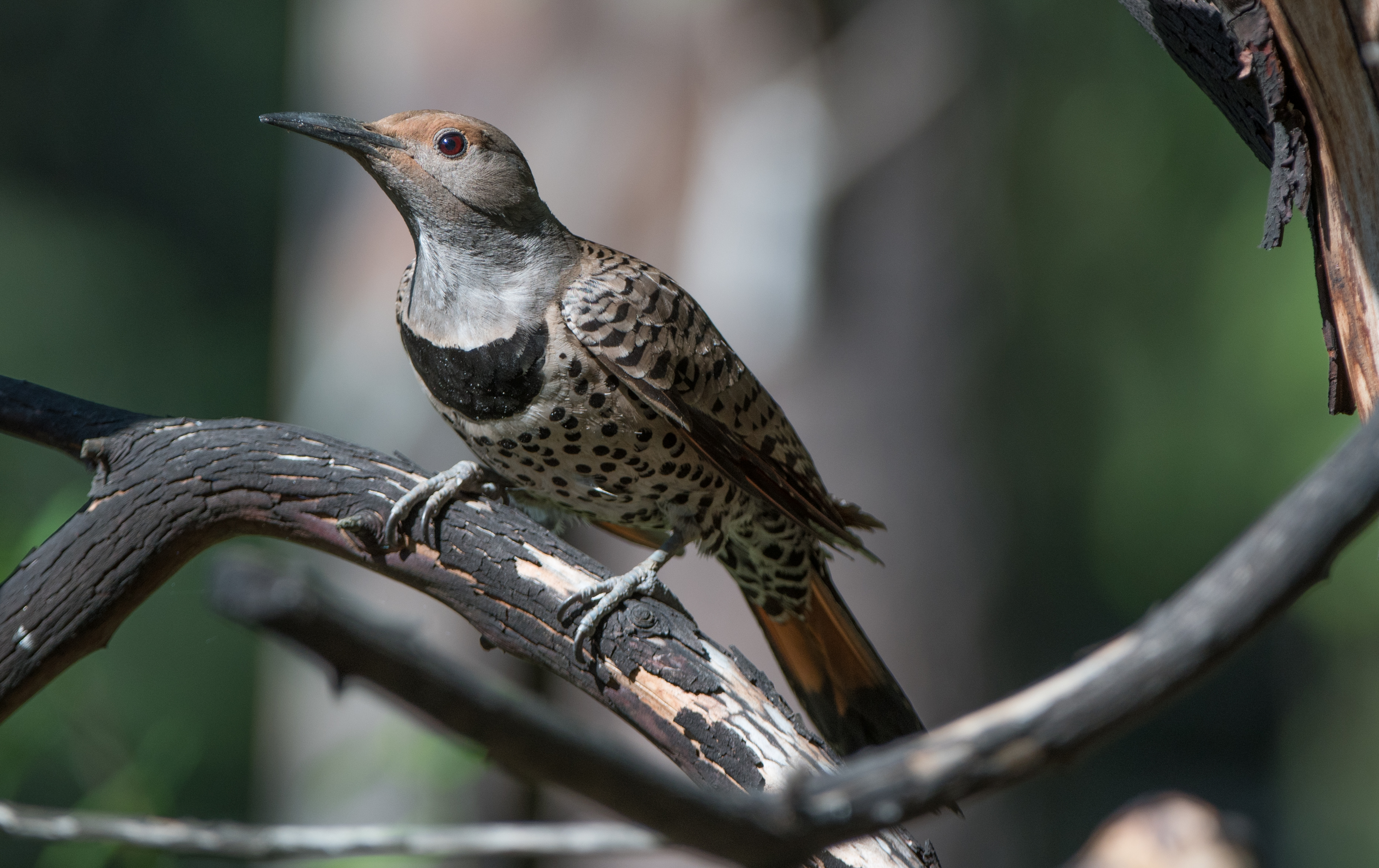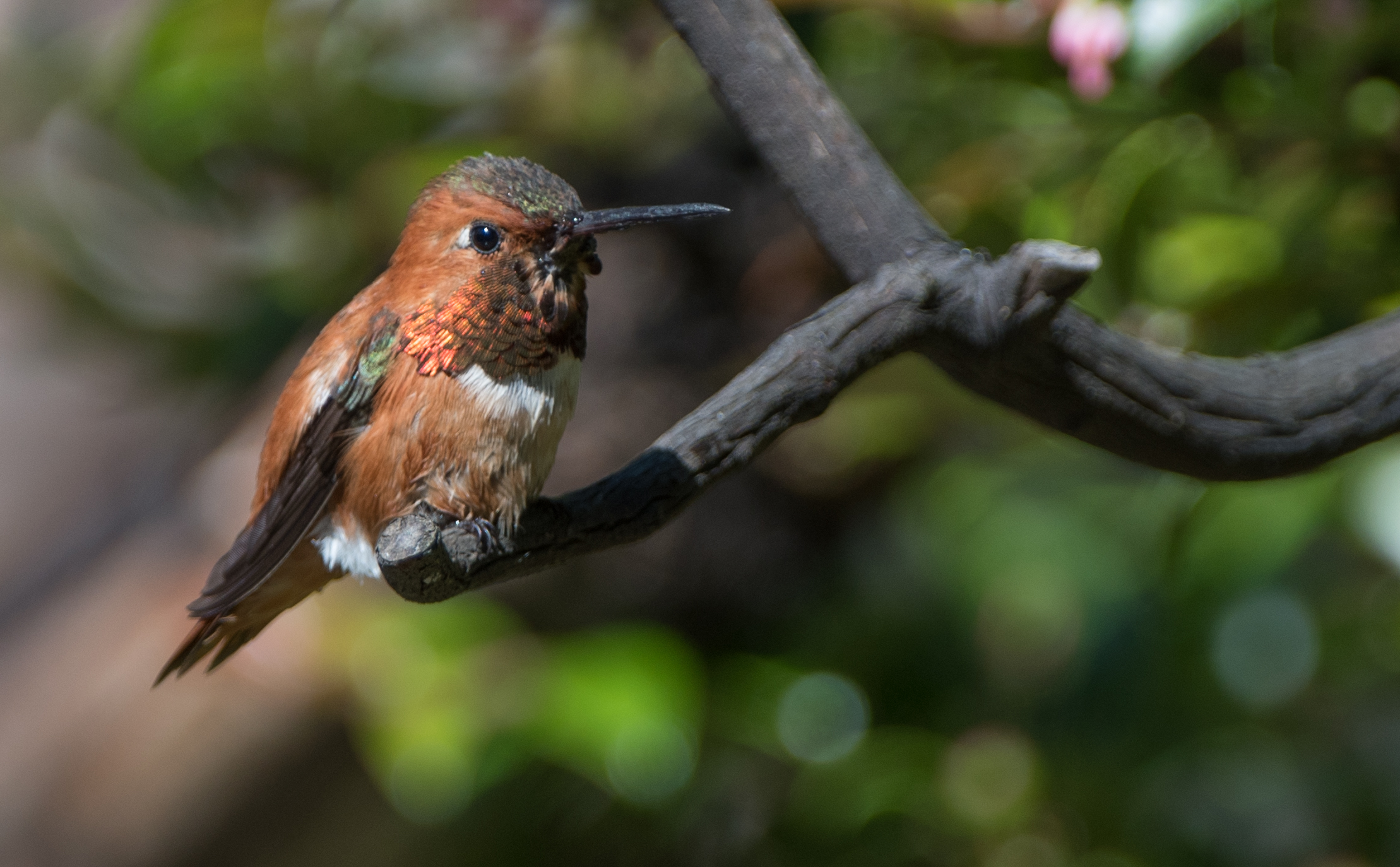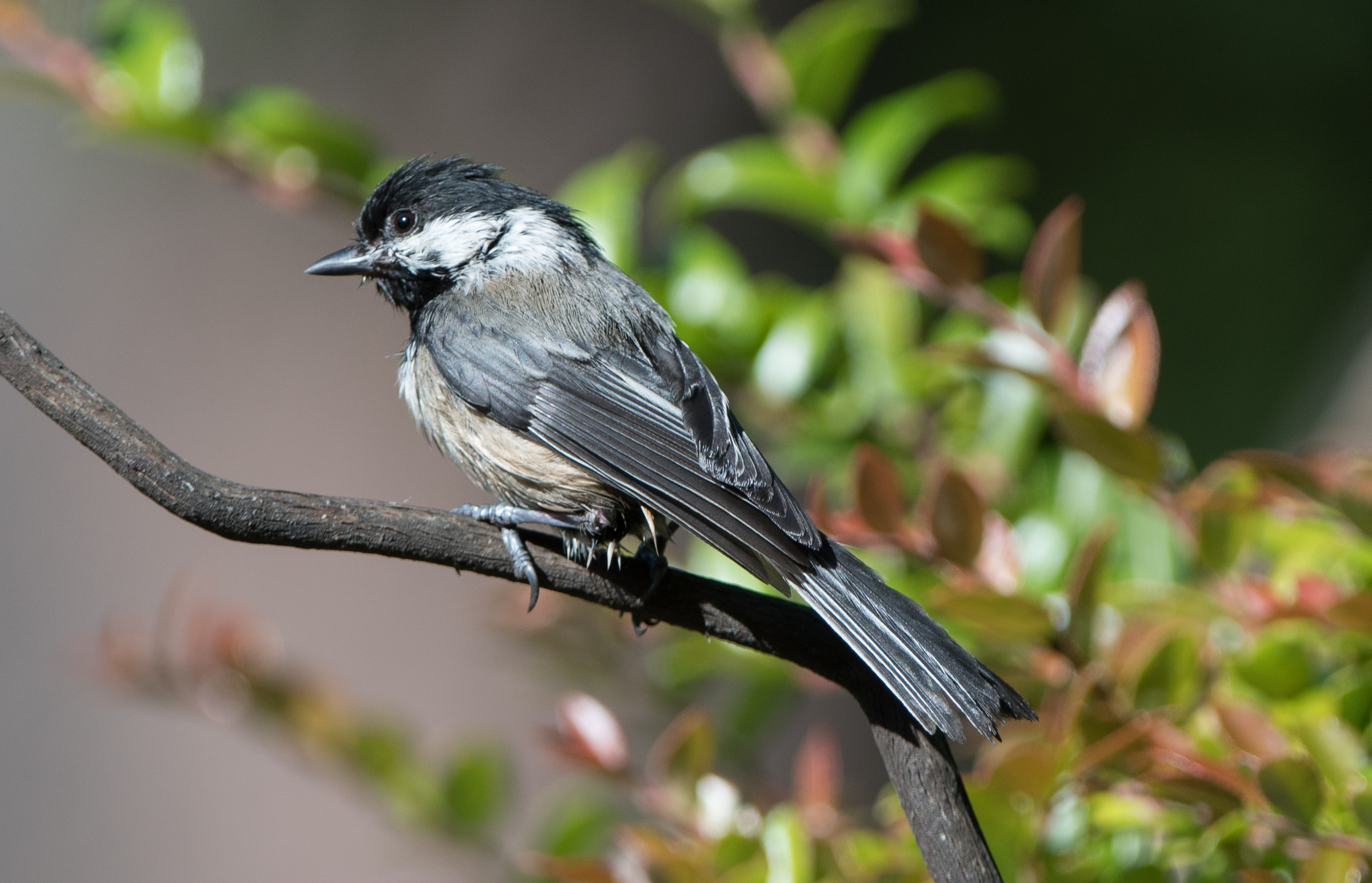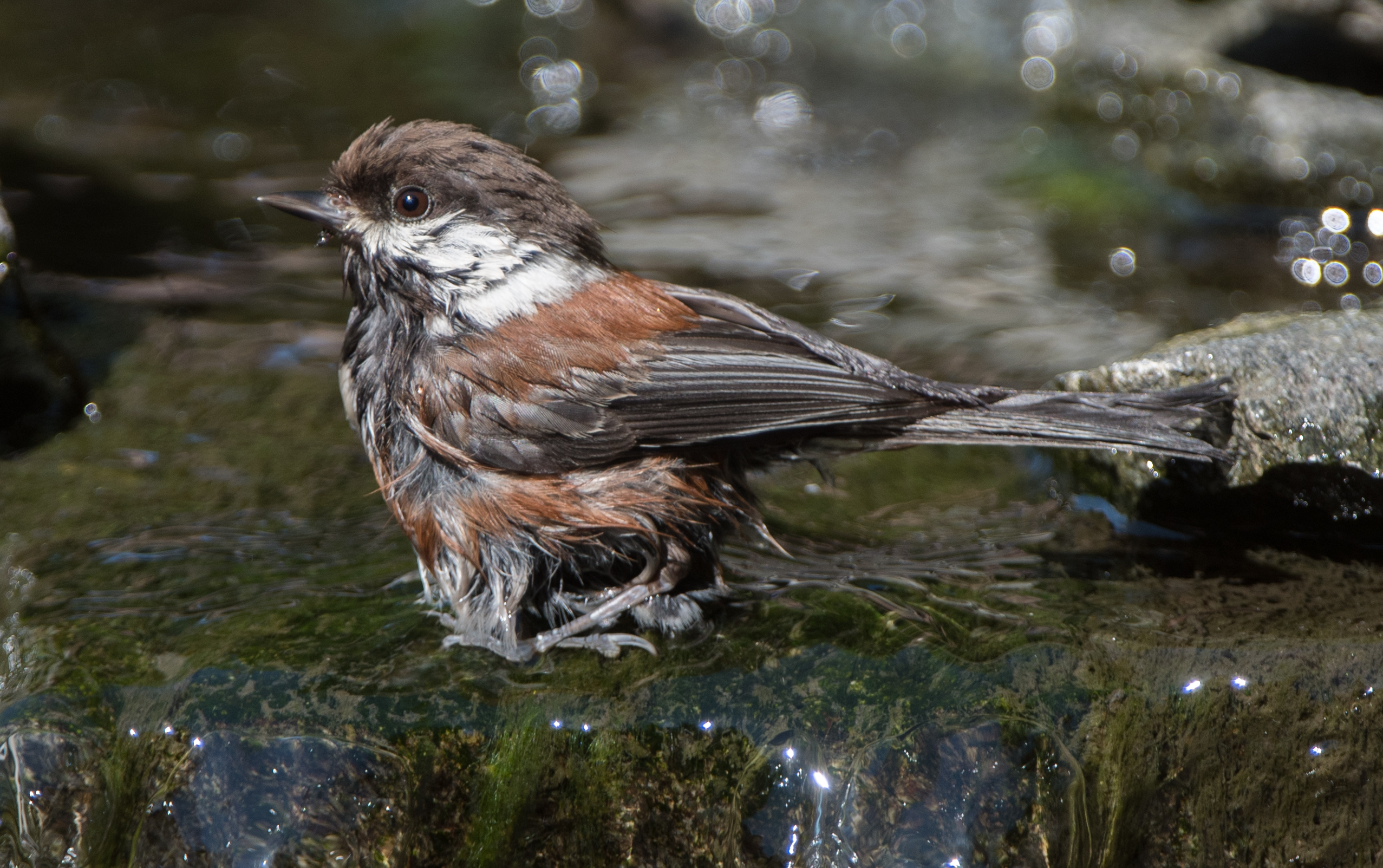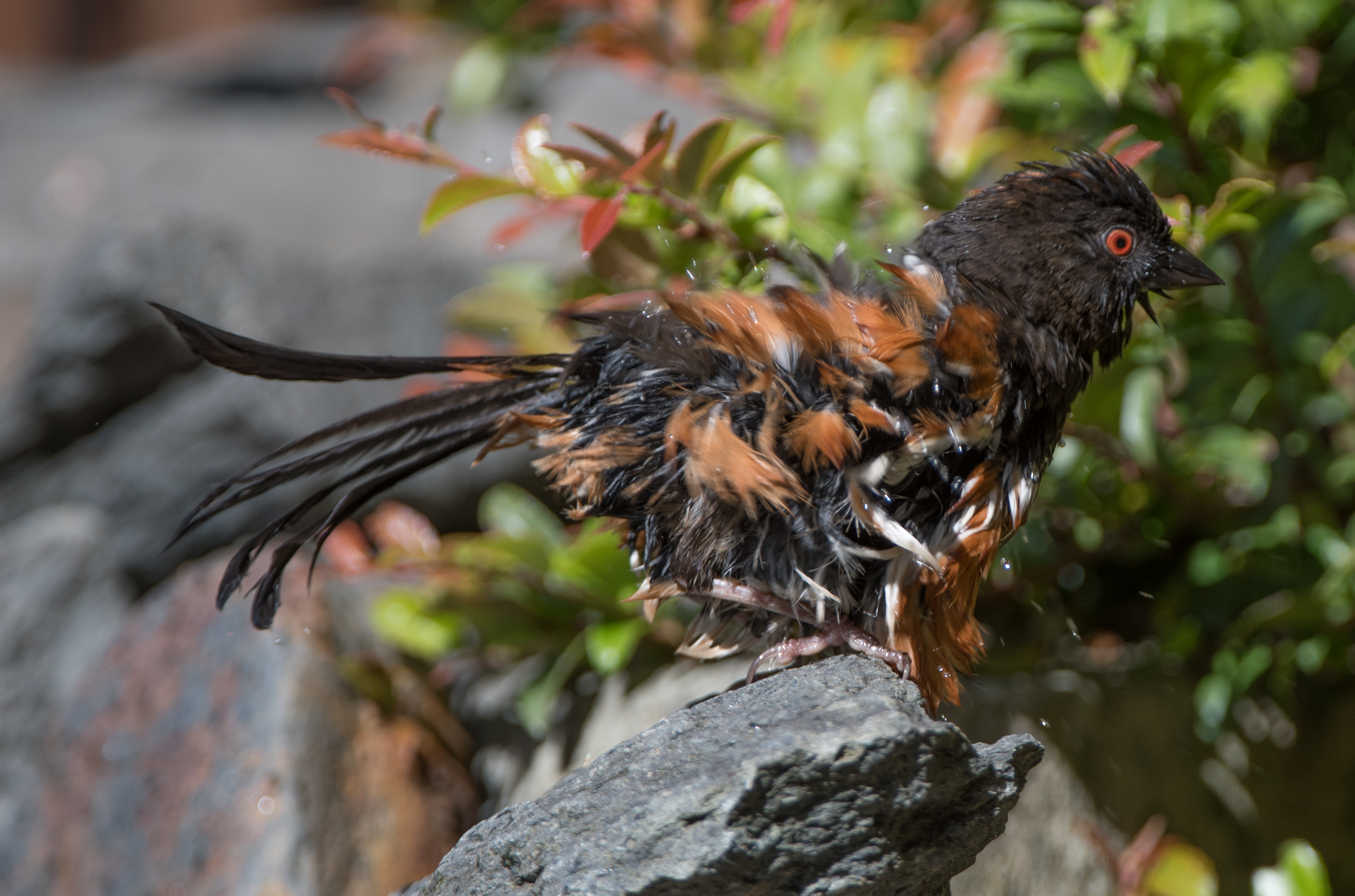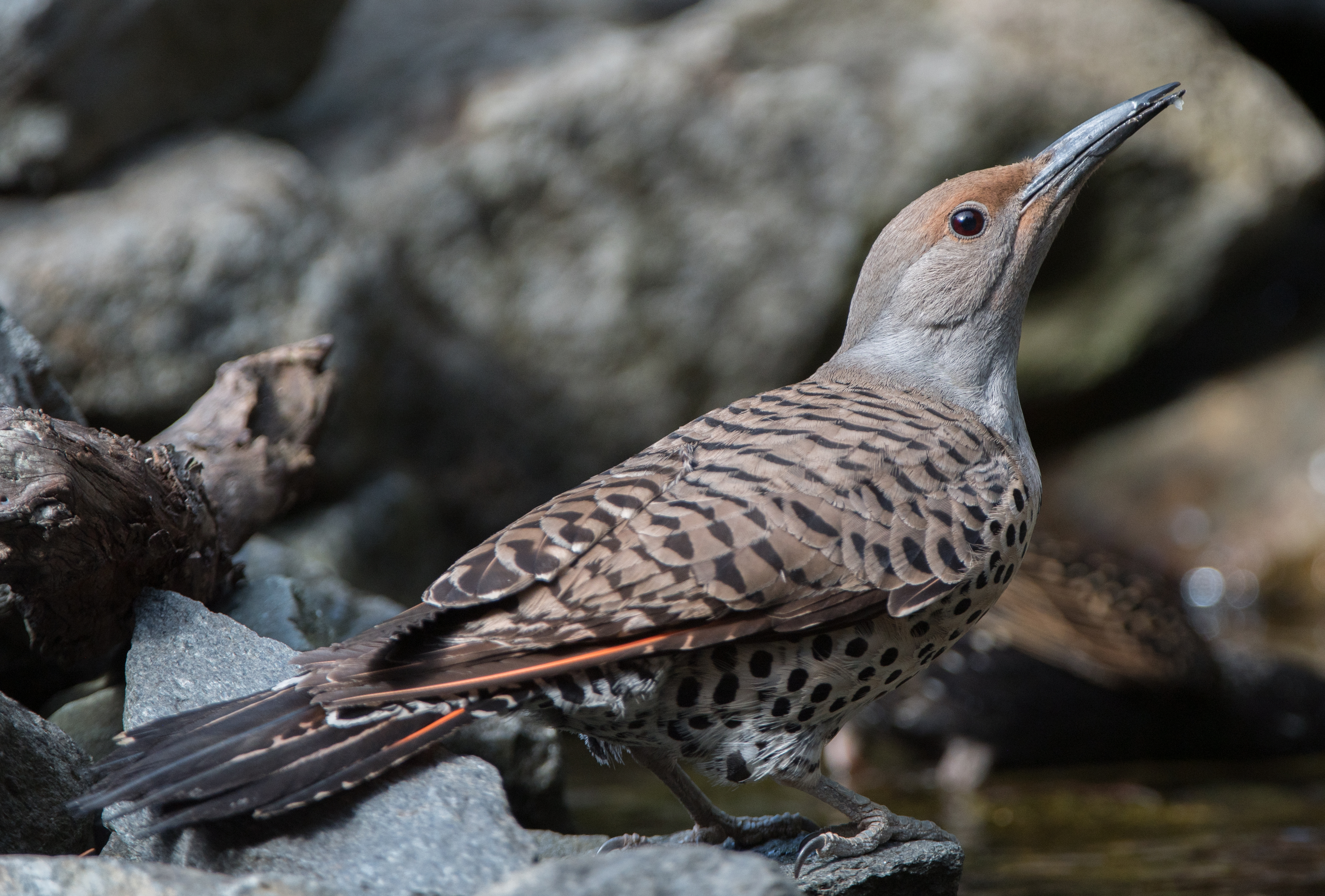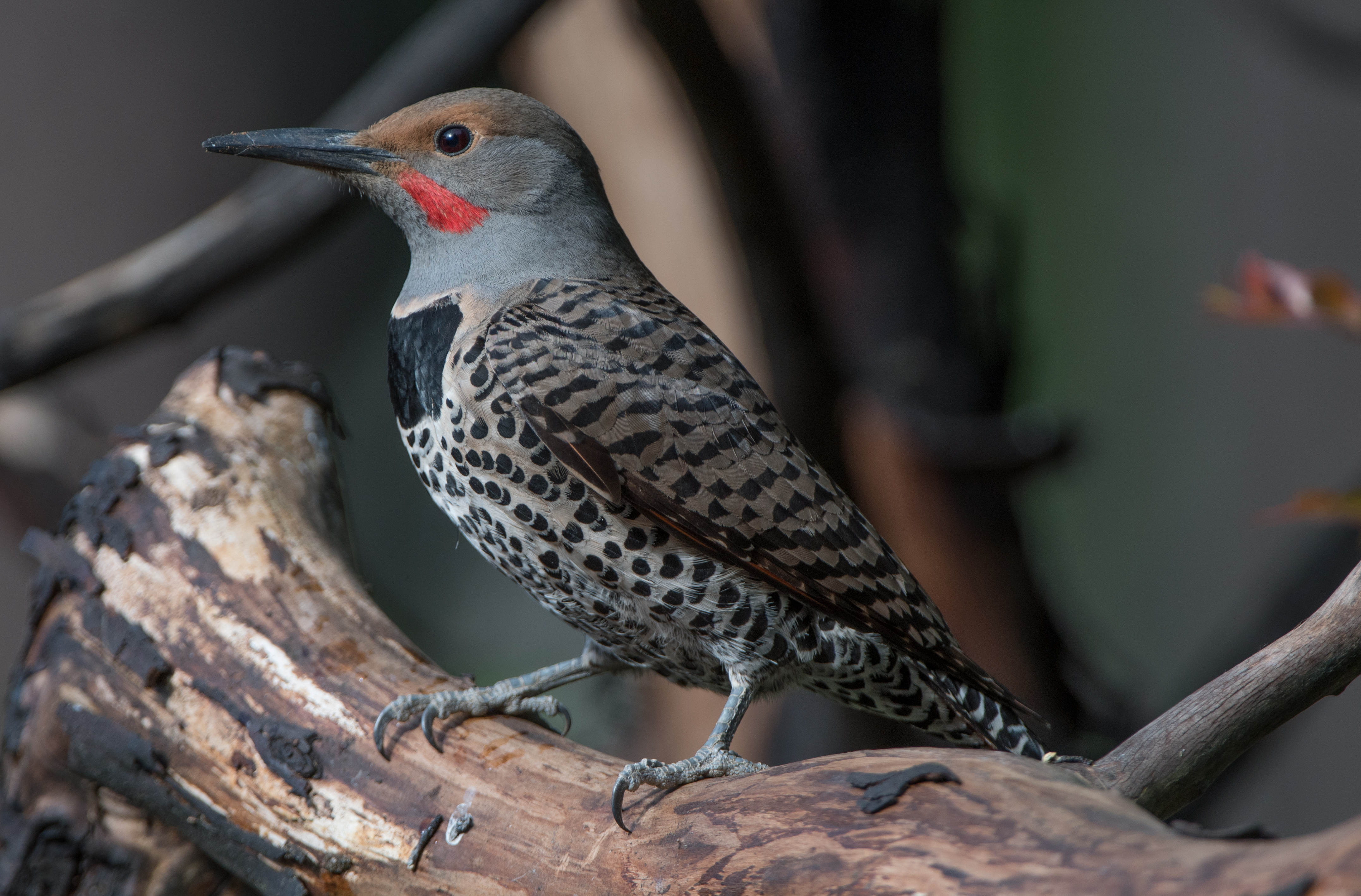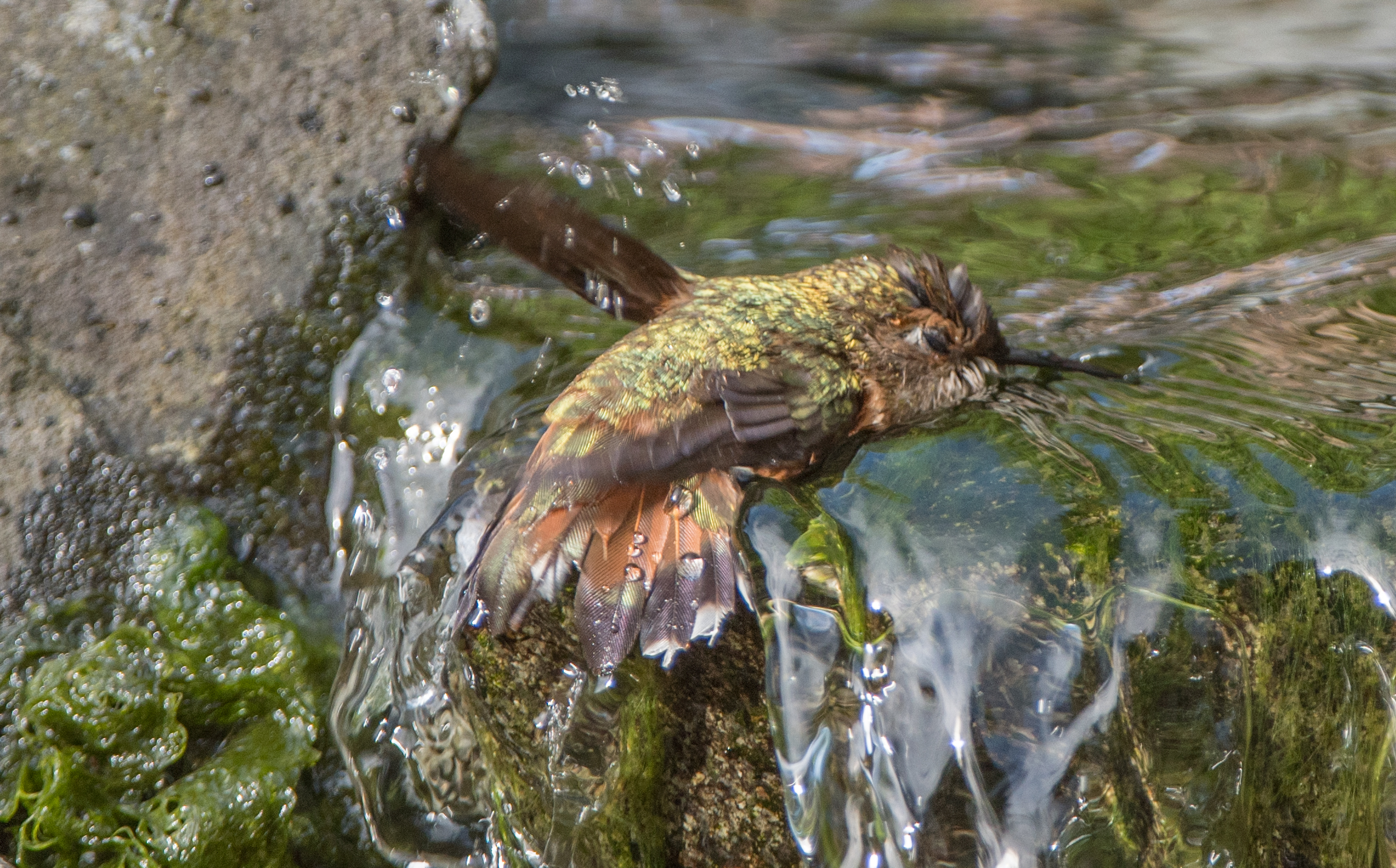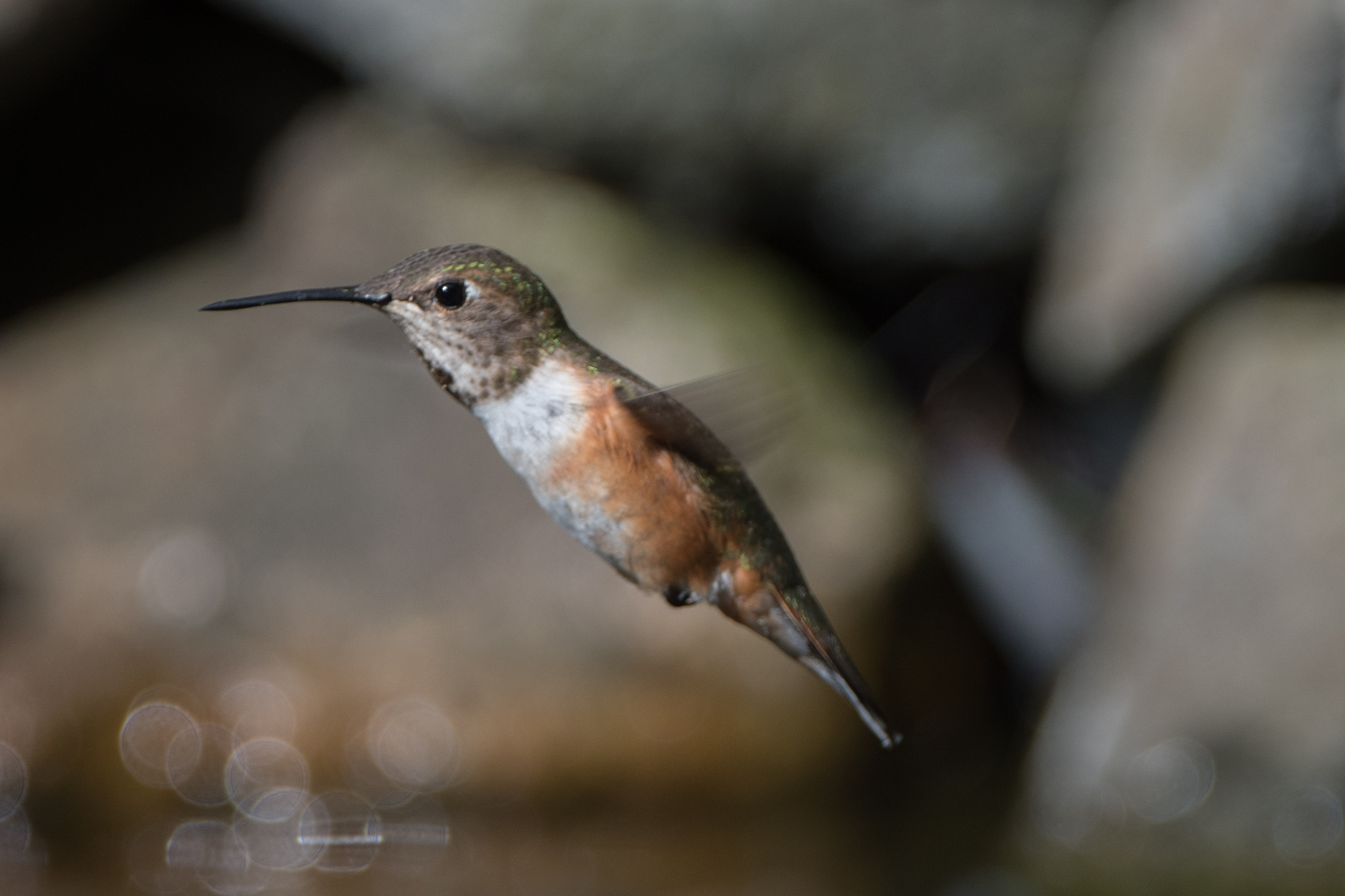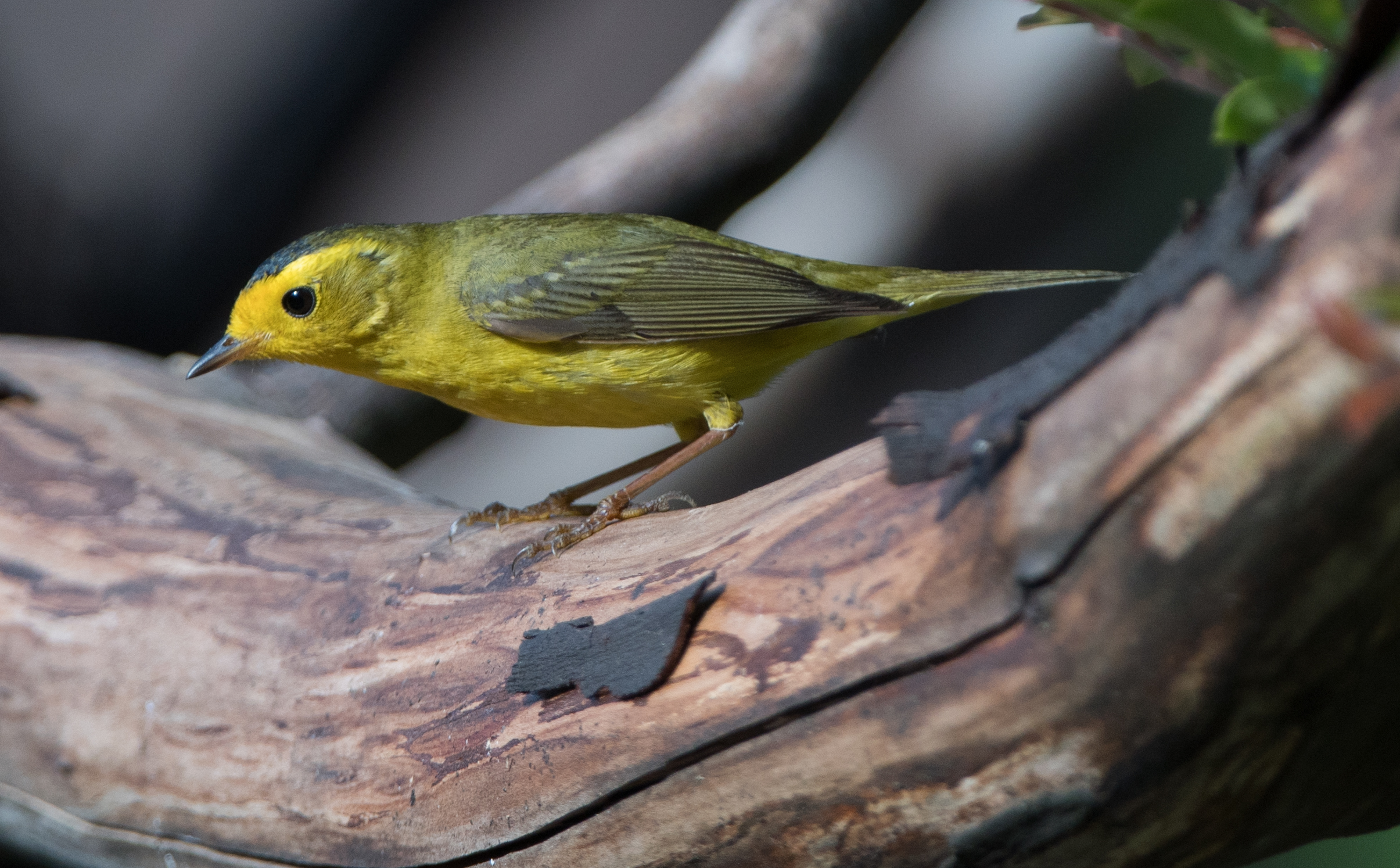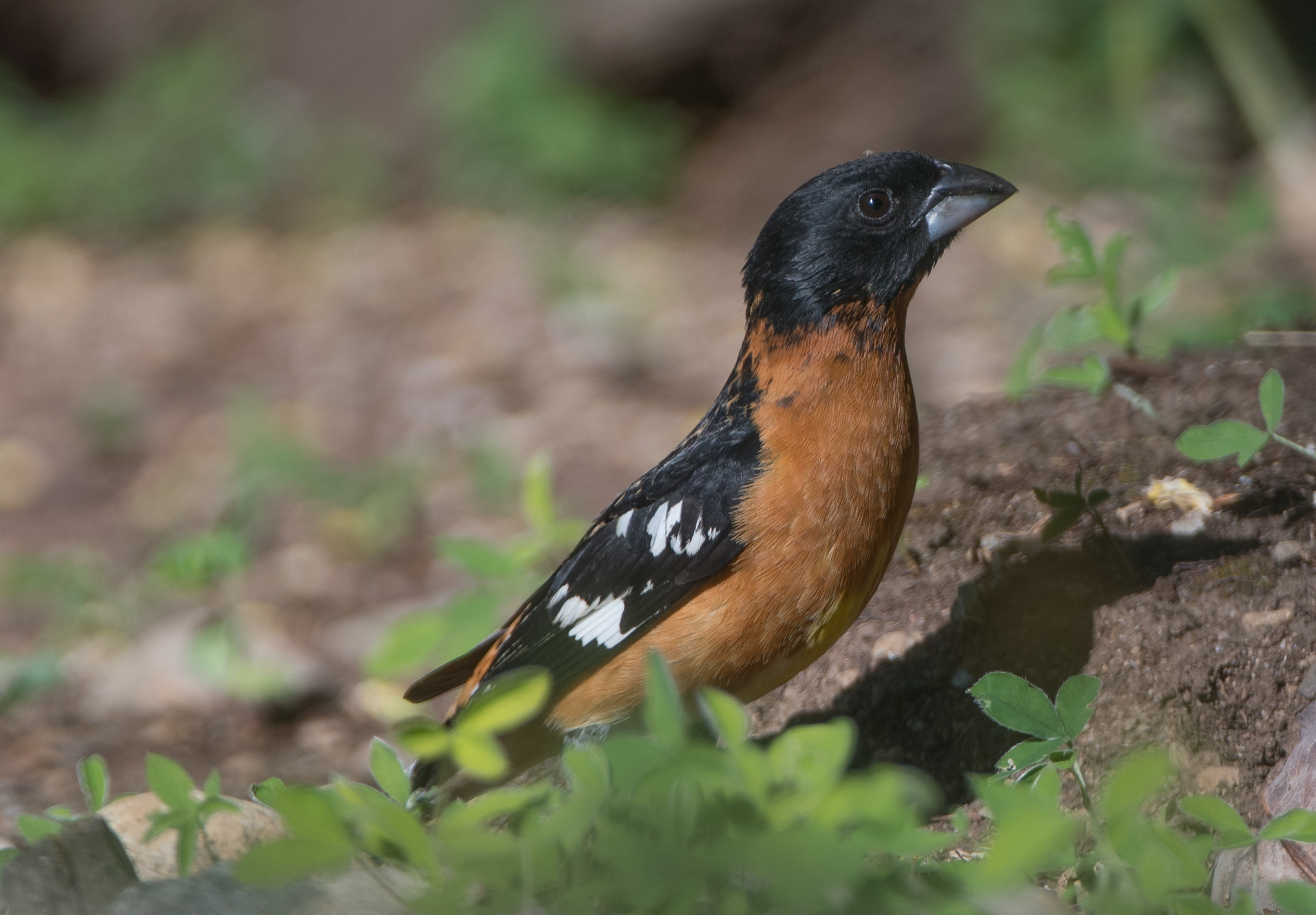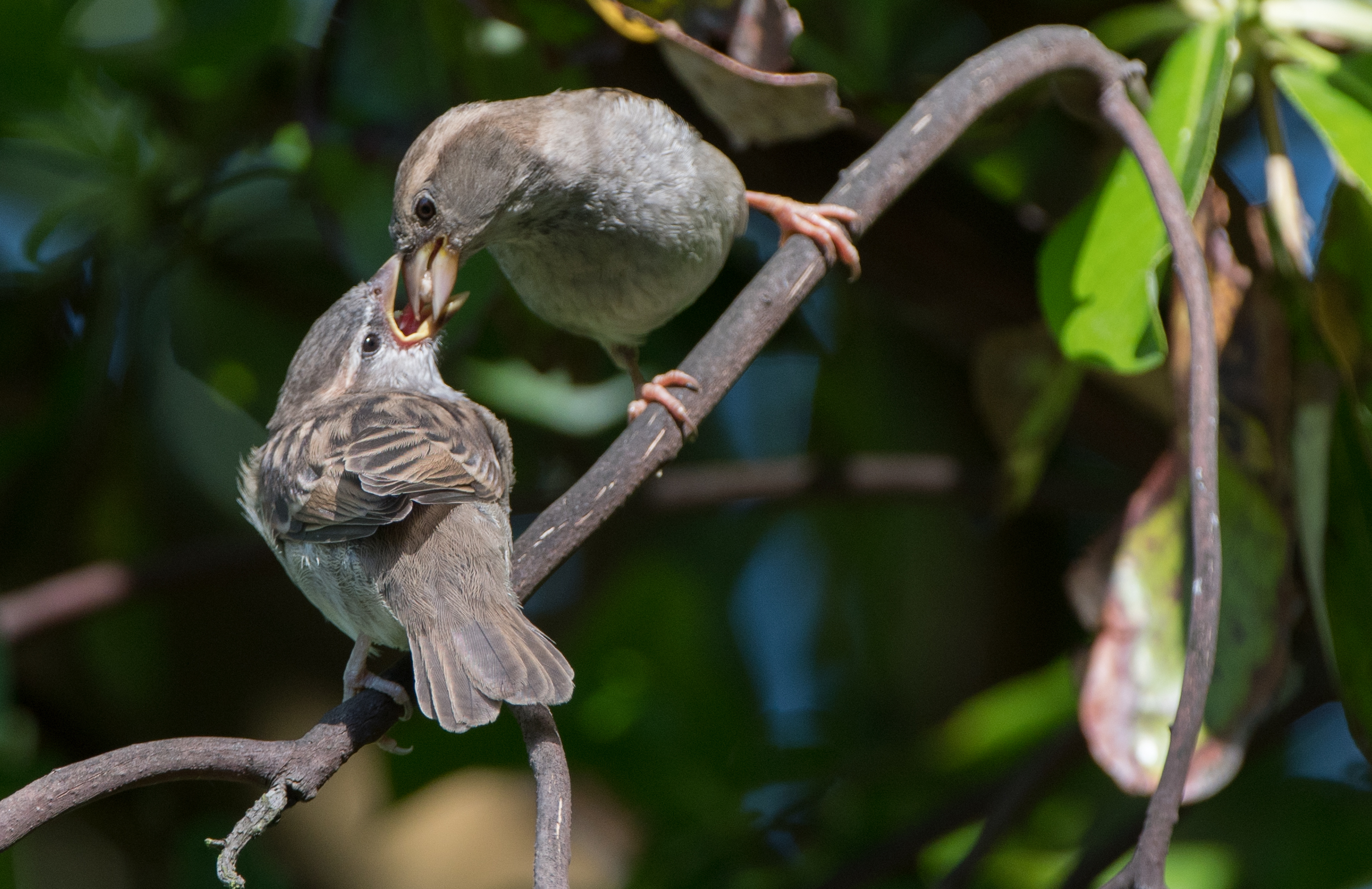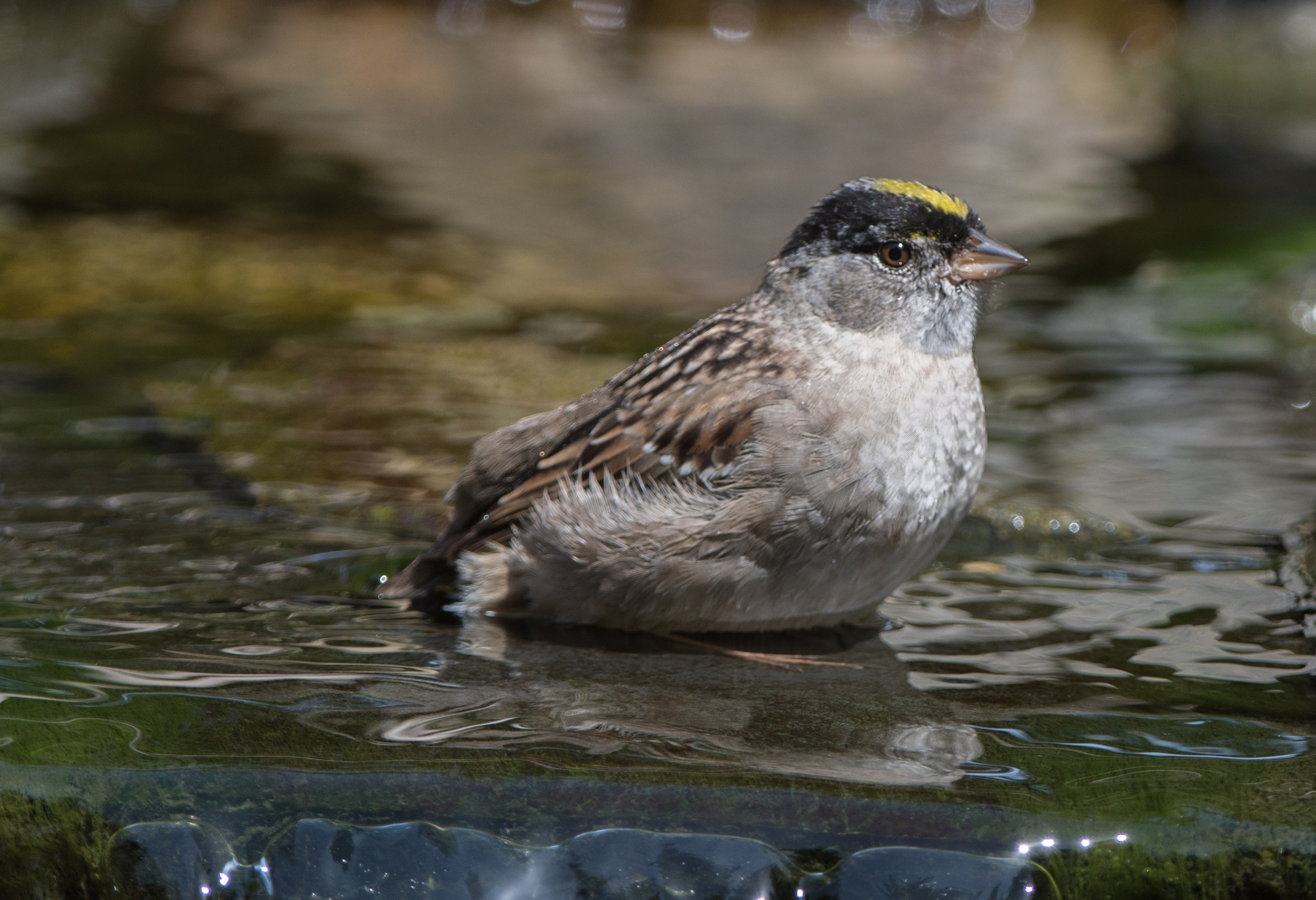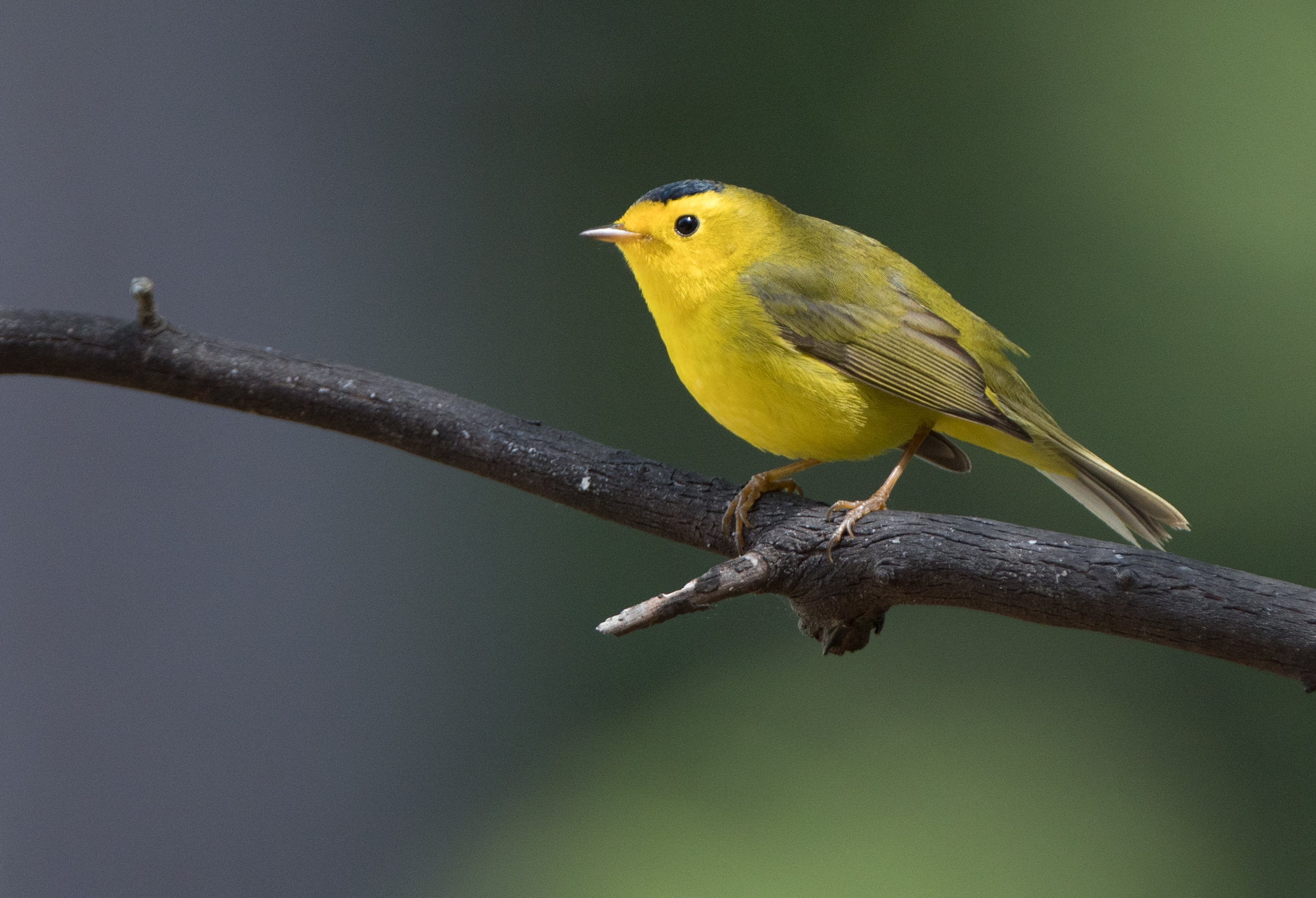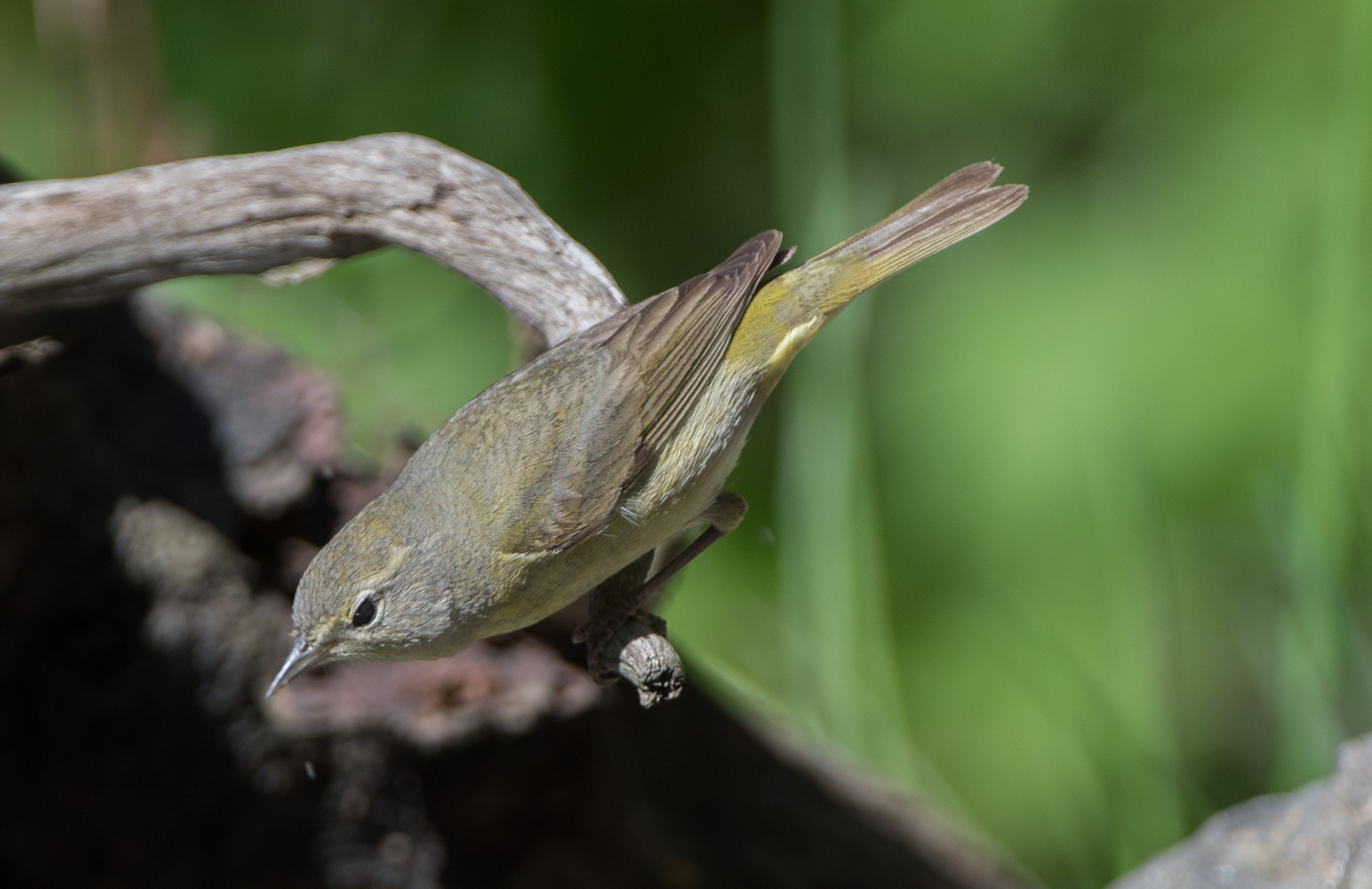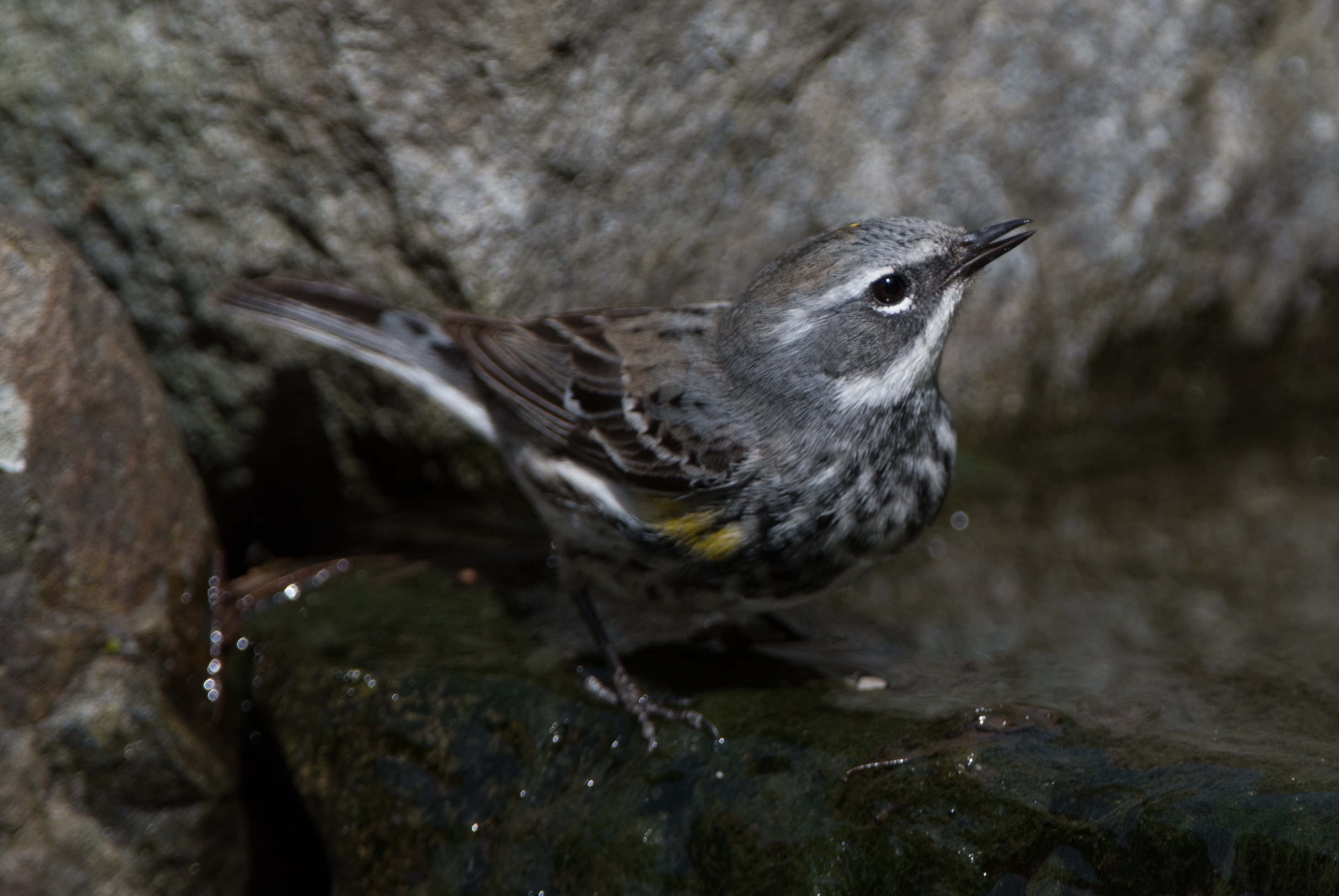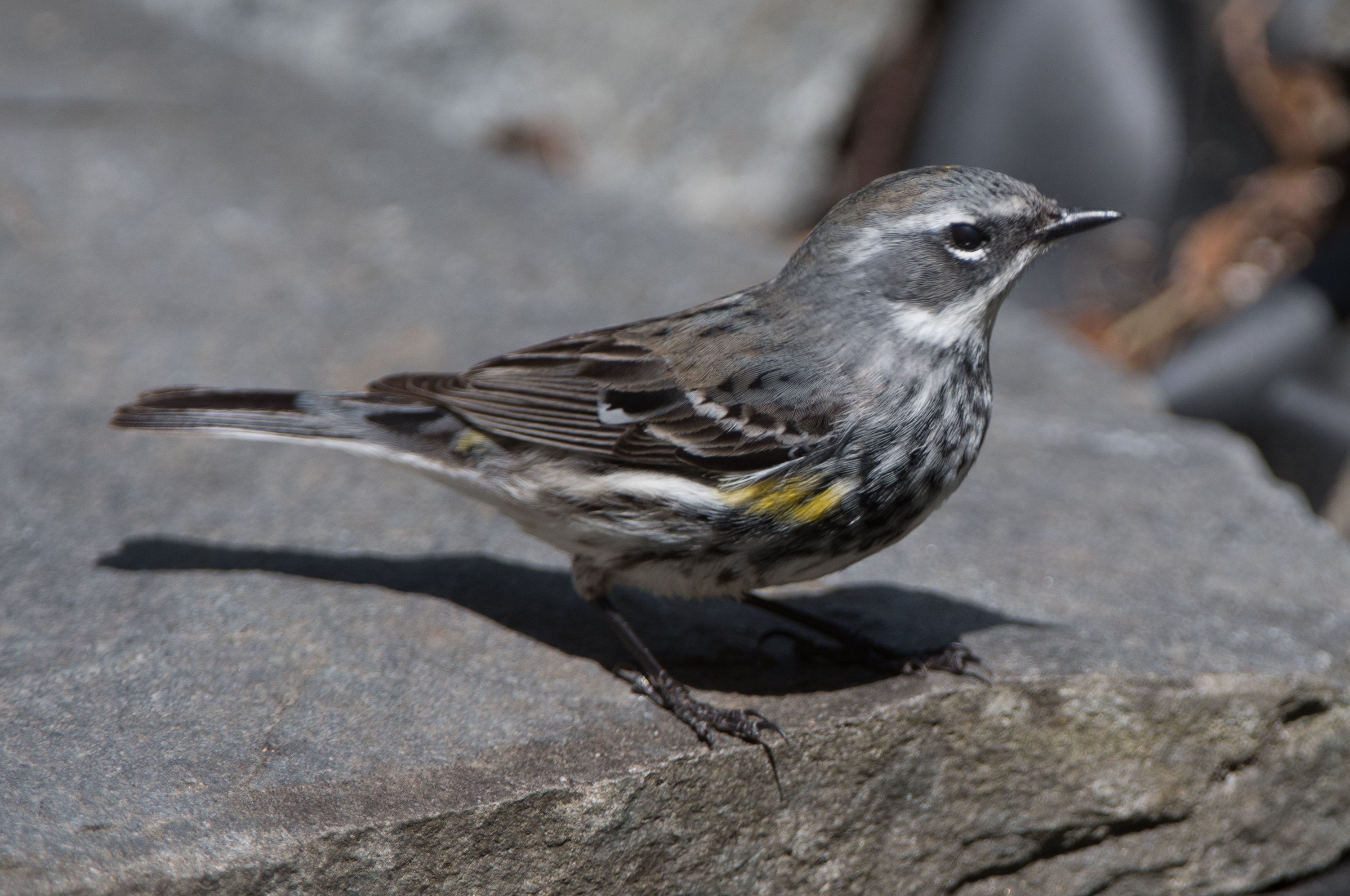I’ve had a couple of weeks of very uninteresting yard birding. I thought last spring/summer yard birding was rather sparse, but this year’s migrants seem even sparser. I took over 200 photos on each of Saturday and Sunday this past weekend (6/1-2/2019) but the photos were all of relatively uninteresting birds (if such there are).
While I can’t recover two weeks of missed opportunities, just after noon on 6/5 I made up for some of the time I’ve spent in the yard. First up was a juvenile Red-breasted nuthatch, and it made a couple of separate trips to the watercourse.
Next up was a magnificent male Yellow-rumped Audubon’s warbler, our first warbler in about two weeks. I managed about 5-6 photos of the warbler before it abruptly flew all the way over the house without ever accessing the watercourse.
I was scheduled to go shopping but lingered for a few minutes and a male Black-headed grosbeak suddenly appeared above the watercourse. It never went down to the water but spent considerable time accessing staging objects giving me the opportunity for over 20 quality photos. The grosbeaks have been visiting the yard but from what I can tell the frequency is only about one to two visits per day, divided between the watercourse and a small hanging platform feeder.
Next up was a juvenile Chestnut-backed chickadee…
But I still wasn’t through, as it turned out. It was time to leave but a female Anna’s hummingbird showed up and began accessing salvia growing near the watercourse. This isn’t an uncommon occurrence, but the hummingbirds generally only spend a second or two at each bloom, making them relatively difficult to photograph. However this Anna’s took its time at each blossom, giving me sufficient time to take multiple photos of the bird.
I was hopeful that I could spend more time in the yard after the shopping trip, but once reaching the island we found a moderate rain in progress, so I gave up any idea of continuing my yard photography. Later, just before dinner, I glanced out our kitchen window and spied an accipiter (most probably a Cooper’s hawk) over the brush pile in our front yard. I tried to get back out in the yard with my camera but the hawk disappeared. This doesn’t bode well for my future short-term yard photography!

